Forgotten History
A walk through forgotten history
 By: Olivia Hutchinson
By: Olivia Hutchinson

 By: Olivia Hutchinson
By: Olivia Hutchinson
They say that history fades when there is no one to pass it down. In a time where everyone is too busy trying to suvrive or getting where they need to be, no one has the time to stop and realize the history they walk past.
This paper will take you on a trip through kingston to some of the historical places you might have never even knew about or may have forgotten.





This building is located in Half Way Tree at the intersection of Eastwood Park Road and Hagley park road which is a very busy thoroughfare. This Georgian style building was built in 1807, where groups like the Church Vestry which including George William Gordon, Baron Kettlehodt and Hon. Edward Jordon congregated.
During its life it was restored in 1834, 1854 and the roof was damaged in 1882 due to a storm, but luckily was spared in the 1907 earthquake.
After imperial cencors, people who investigate corruption, worked there during the Second World War, the building was further used as a Second Juinor Centre by the Institute of Jamaica from 1941 to 1981.
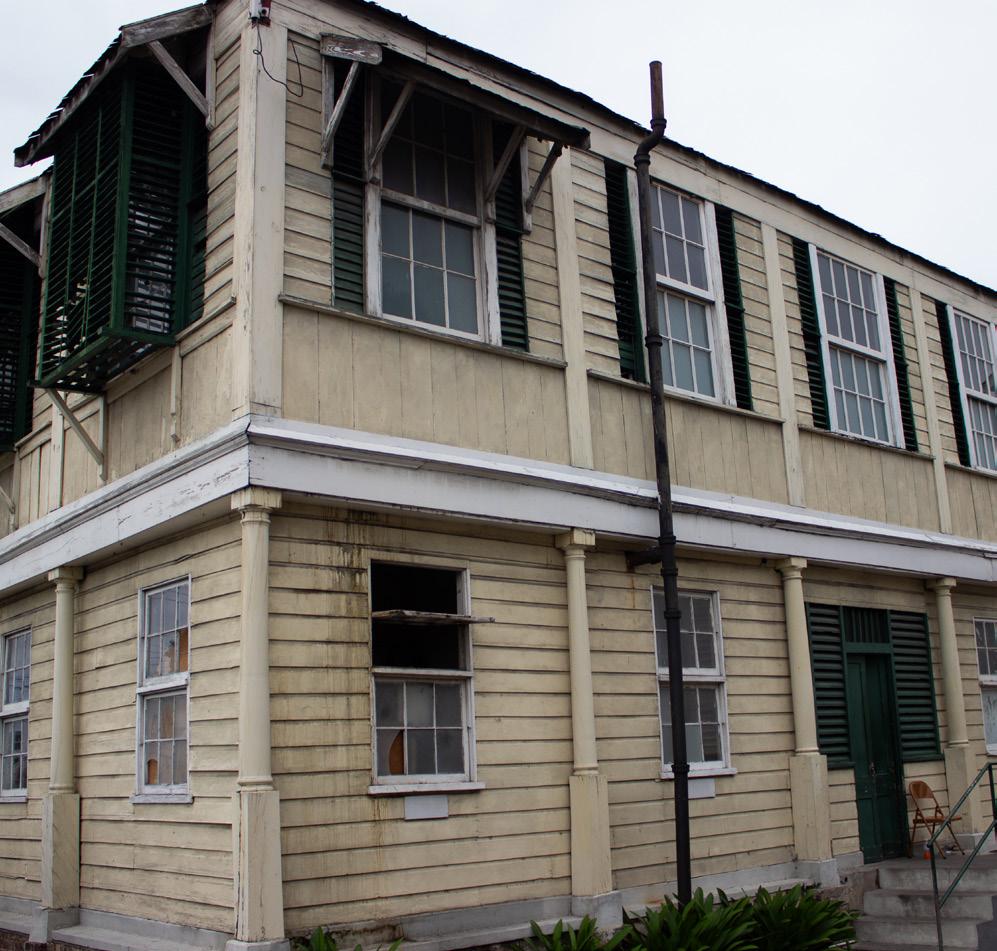
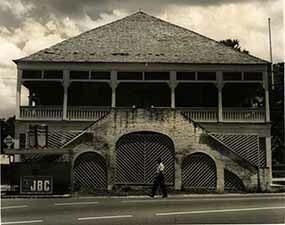
 Back of Old Courthouse, St Andrew
Back of Old Courthouse, St Andrew



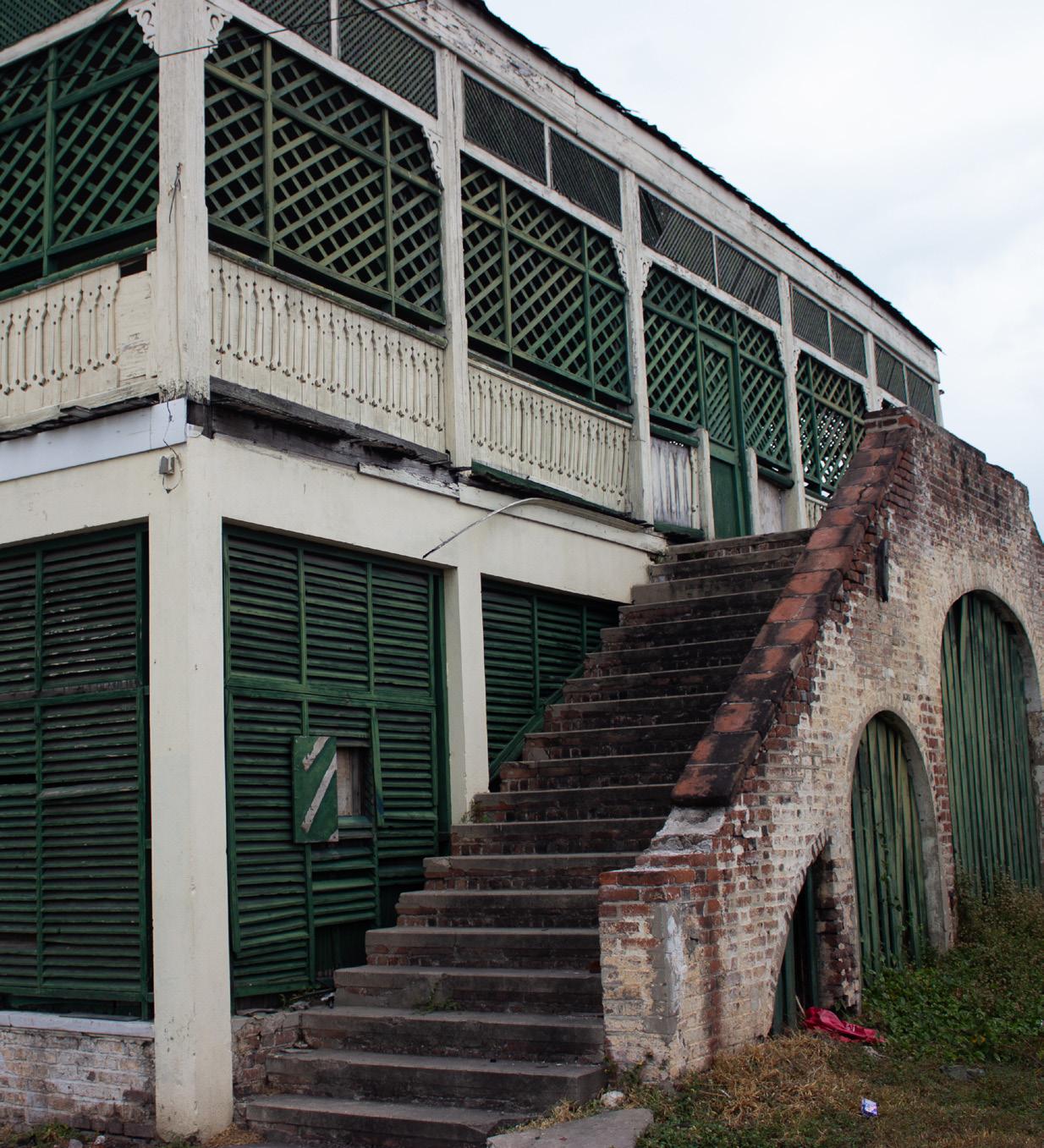
The latest restoration project that was completed was in the 1990s and it was used as a center for after school activities for children. The current state of the building is not one to be desired, although it does get some use as an venue for Sunday School by the St Andrew Parish Church. There is hope the courthouse will be restored again for future use by the community.
Side of Old Courthouse, St Andrew





Just a stone throws away from the Old Courthouse, one of the oldest churches in Jamaica resides. It was established in 1664 with its first rector Rev. James Zellers after the British established administration after taking the island from the Spaniards.
The church was the only Anglican church in the parish until 1870 when they were disestablished, after this they made different mission stations which that became their own congregations after some years.

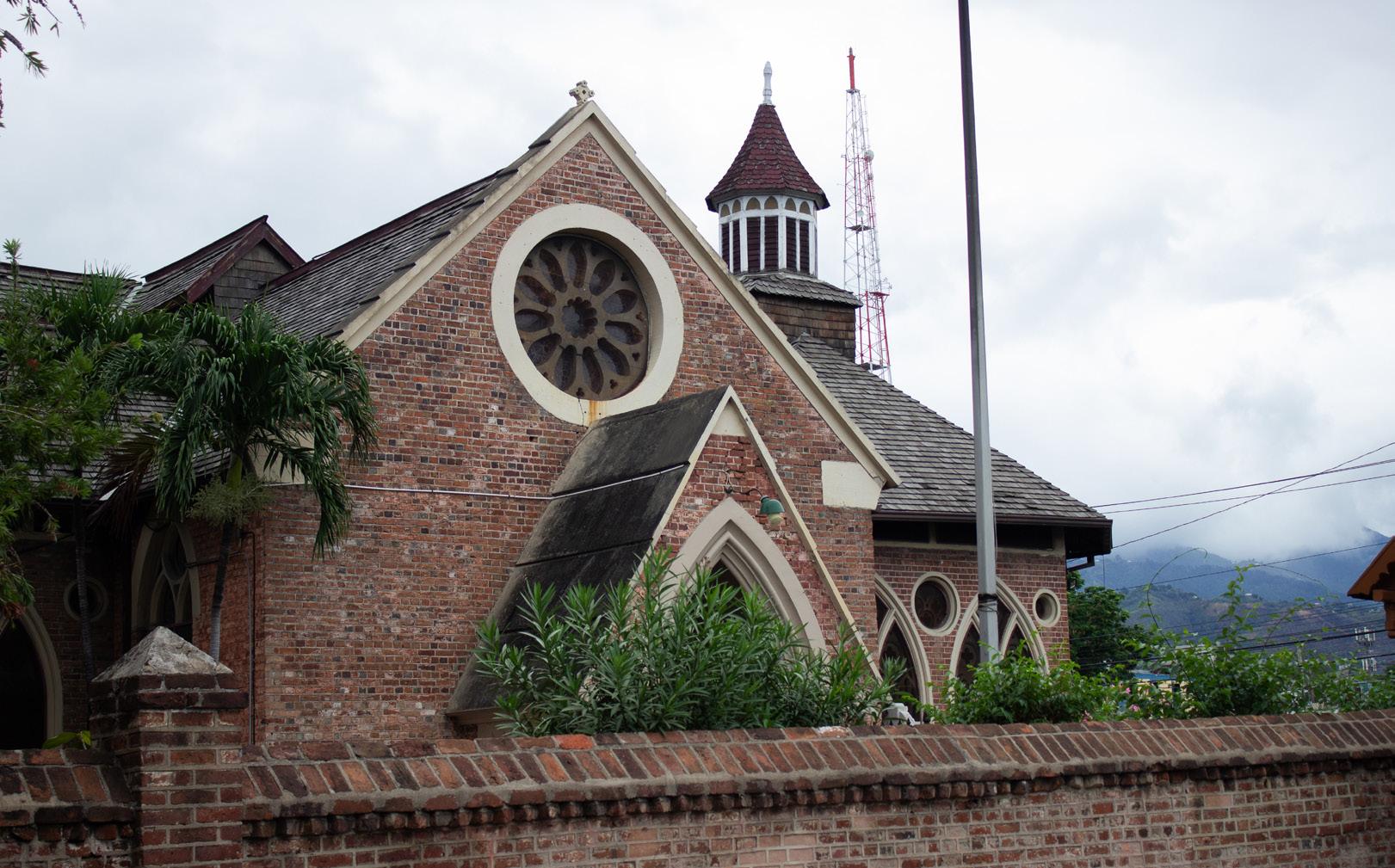
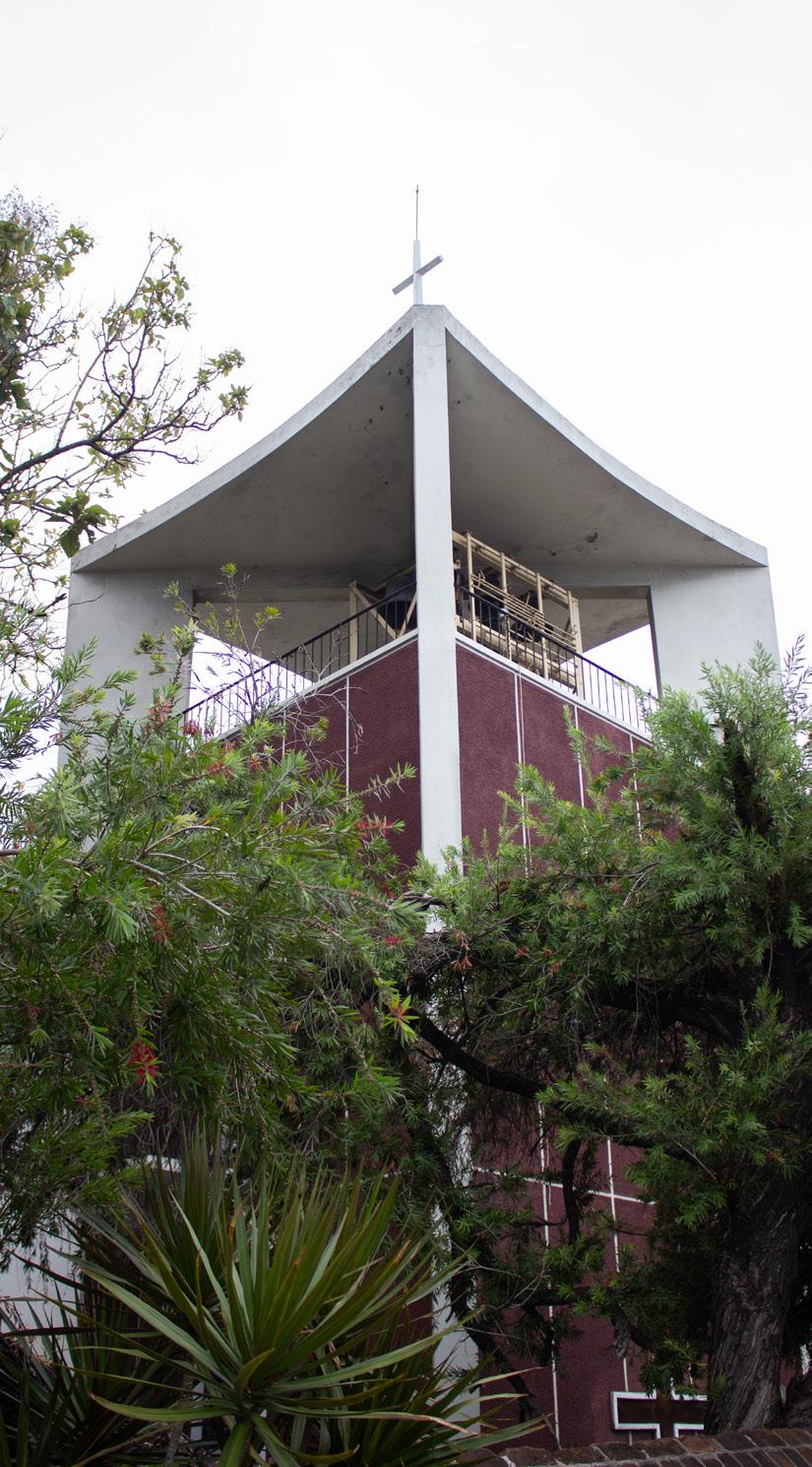
The current building was completed in 1700, the first church buildings that were some distance away were destroyed. There was some much-needed renovation done in 1879 due to the growing number of attendees and damage from natural events.
The church on its grounds has the oldest still in use cemeteries with many prominent people in history that made the cemetery their final resting place.

 Front view of the St Andrew Parish Church
Front view of the St Andrew Parish Church
Down the road from the courthouse and church, is the Half-Way-Tree Clocktower. It sits at the junction of four major streets in the Kinston Area. It was built in 1913 as a memorial for King Edward VII of England. The spot the clock tower is at was an important meeting place signifying the main point of Kingston to do business. The spot once held a silk cotton tree that served the same purpose while giving some shelter for the famers and merchants that passed by, but sadly the tree died in 1866 and removed.



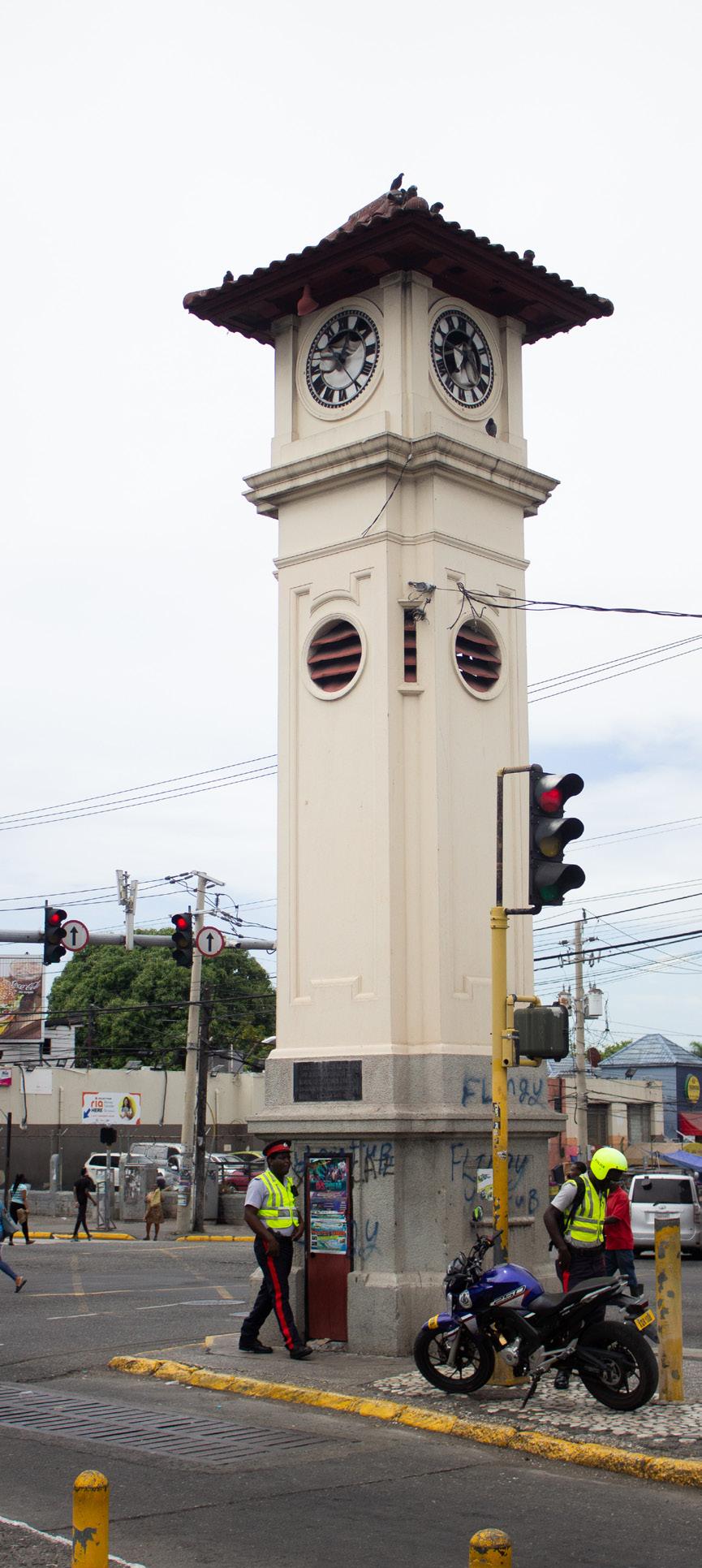


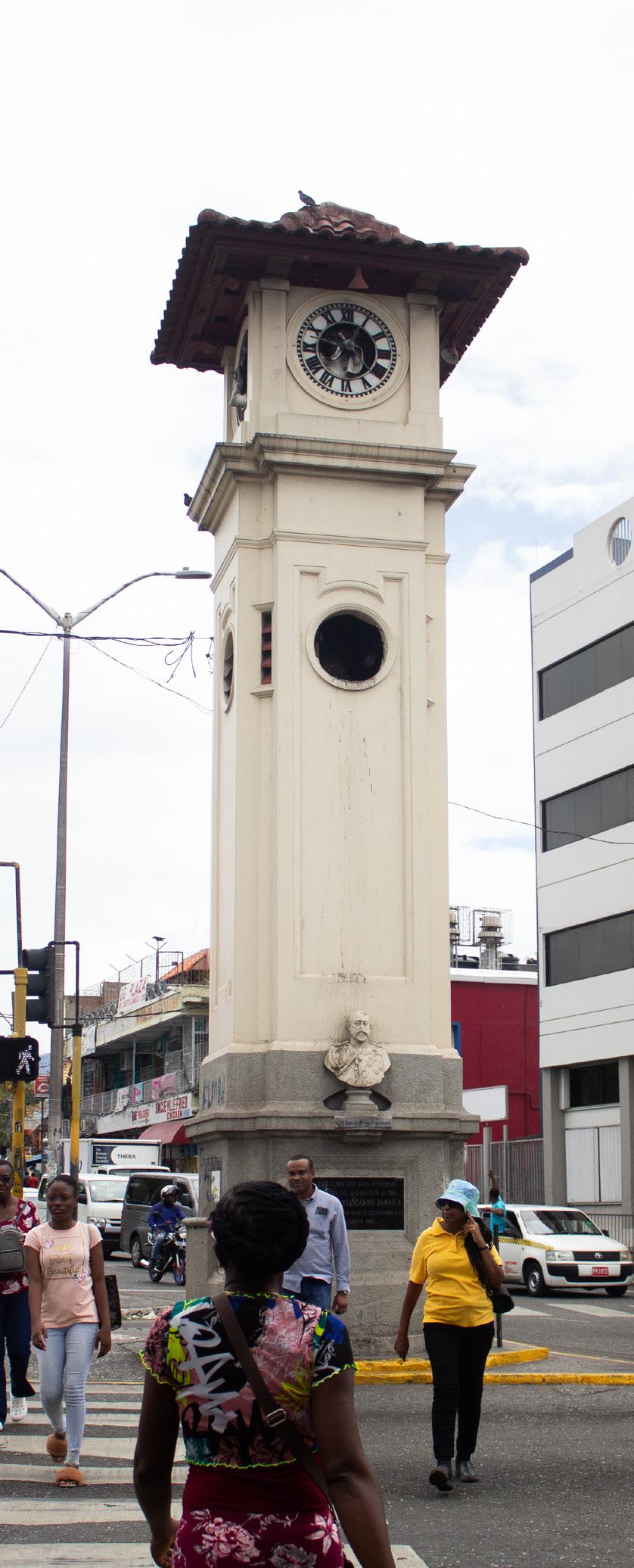








Coming from Half-Way-Tree and making our way down HalfWay-Tree Road to Slipe road, we make it to Carib. The Carib Theatre was first opened in April 1938. It was the largest of its kind in the Caribbean with total of 1,750 seats available at the time. It was the highest grossing theatre in the Caribbean. It showcased performers like Louis Armstrong, Percy Sledge, The Drifters, Bob Marley and Peter Tosh while Carib was functioning as a concert hall. Reconstruction was done in 1954 to put in their first CinemaScope screen and further in 1982 a new sound system was installed which was the best in the world for the time.





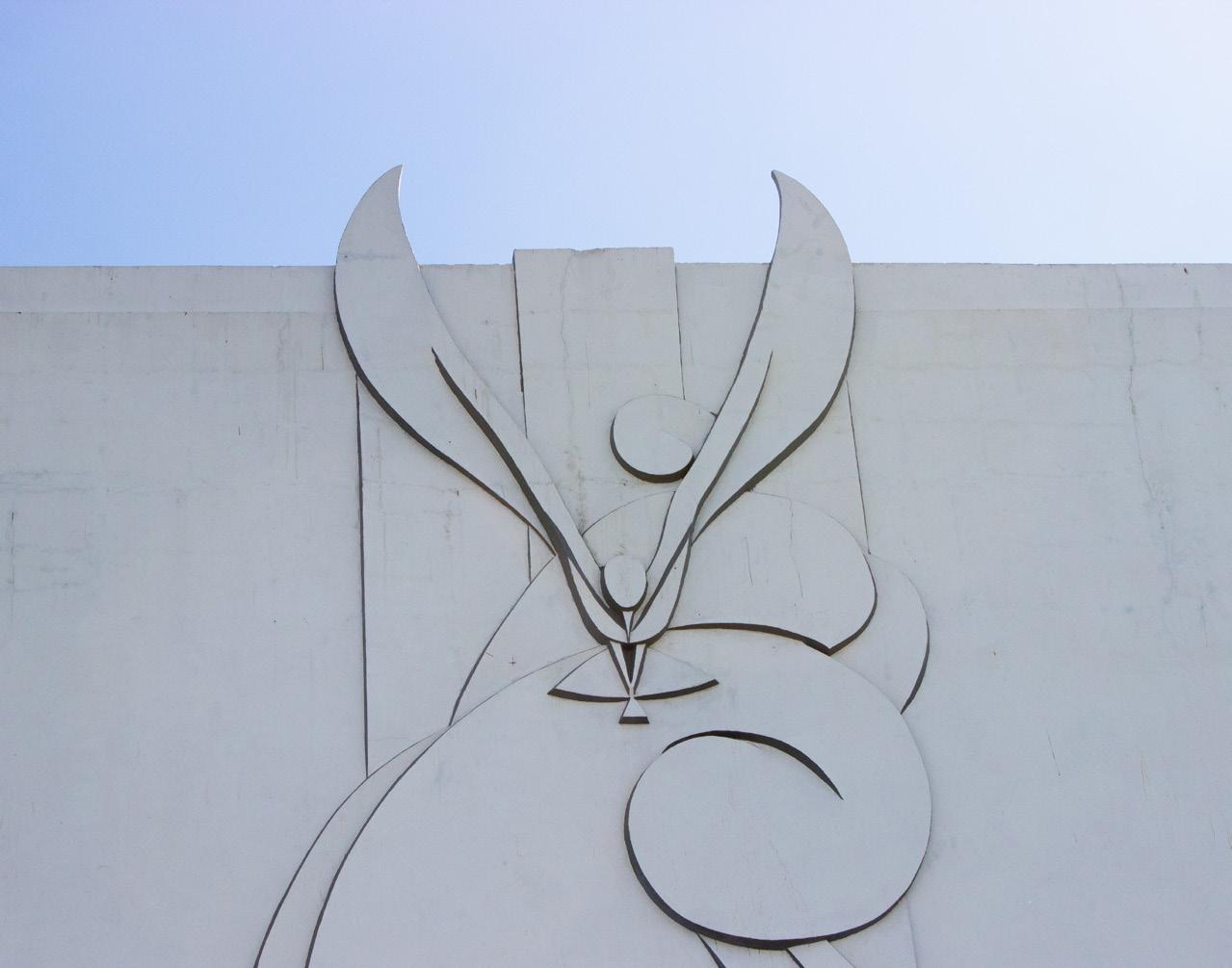
Even with all these good things, in 1996, a fire broke out in the ceiling that destroyed the interior, but luckily the exterior stayed intact. The reconstruction started soon after and Carib was able to be reopened in 1997 to the Carib we know today.



 A detail view of detail on front of Carib Theatre
Back view of Carib Theatre
A detail view of detail on front of Carib Theatre
Back view of Carib Theatre

Going back up Slipe road to head on to Caledonia Ave and onto Tom Redcam Drive, we make it to Little Theatre. The first thought of this building was conceived in 1941 by Greta Fowler in the form of the Little Theatre Movement, with the goal to fostering drama, however it wasn’t until 1957 at a meeting discussing putting in a bypass a space opened for the movement. The idea of a cultural center had started development by Mr. LeWars and Mr. Henry Fowler. There was a struggle to fund the opening of the building, community leaders had to organize finance to keep progressing.
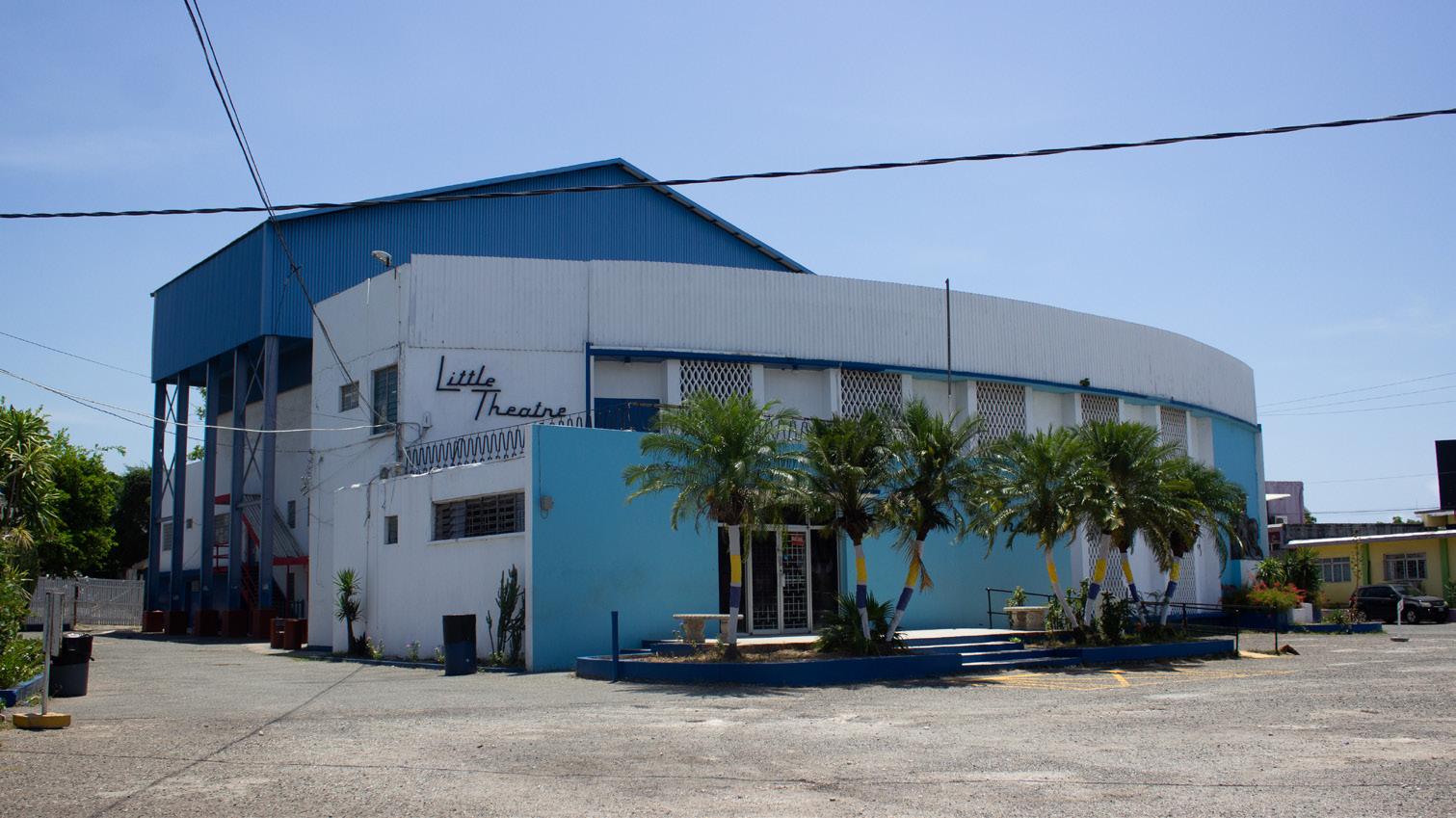


 Above: Close up of Little theatre Sign
Above: Close up of Little theatre Sign

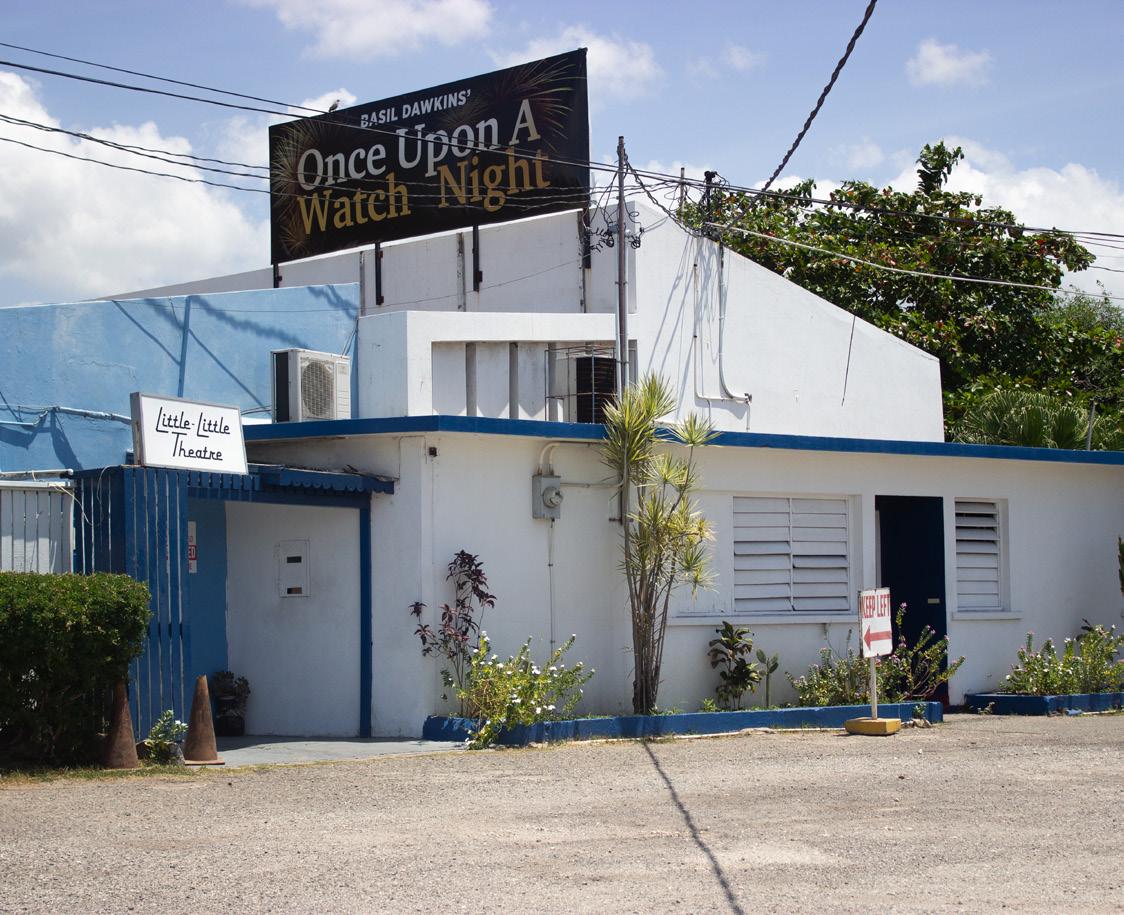

The final design of the building was made by Gibert Pratley for the opening in 1961. With a list of prominent people like Neol Coward, Oscar Hammerstein, Louis Armstrong, Hon and Mrs. Norman Manley and Sir Alexander Bustamente.
In 1969 they added a drama school while still being headed by Greta Fowler. The rehearsal room became the Little-Little Theatre which is there today. A lovely Memorial to Greta Fowler for her devotion to the Little Theatre becoming what it is today.


 Above: View of Little Little Theatre
Above: View of Little Little Theatre


Coming down Tom Redcam Drive and going onto Camp Road, passing Jamaica Cconstabulary Force, Jessie Ripoll, and Sabina Park then turning onto North Street we end up at Holy Trinity Cathedral. One of the most beautiful churches in Jamaica with the highlight of a 65ft copper dome.

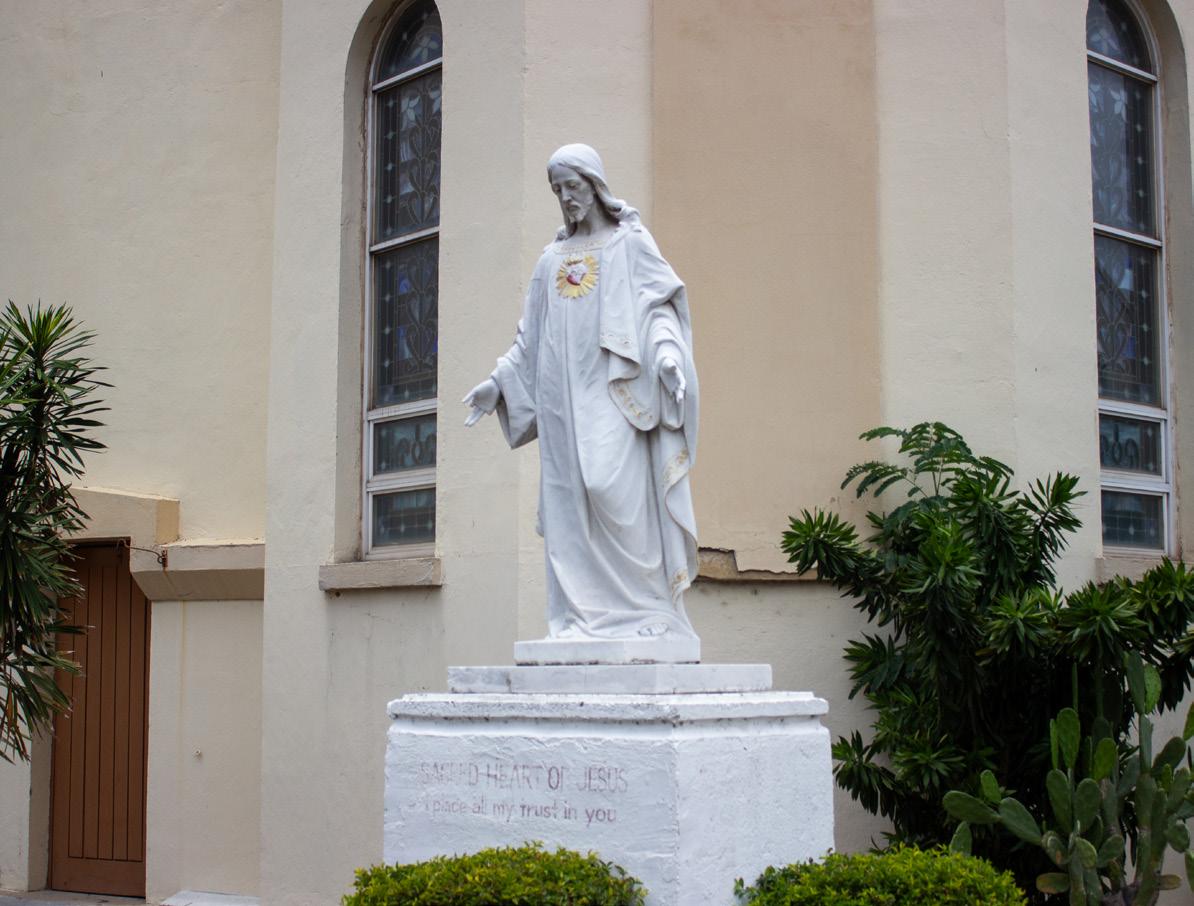

 Bell located on Holy Trinity Cathedral grounds
Bell located on Holy Trinity Cathedral grounds

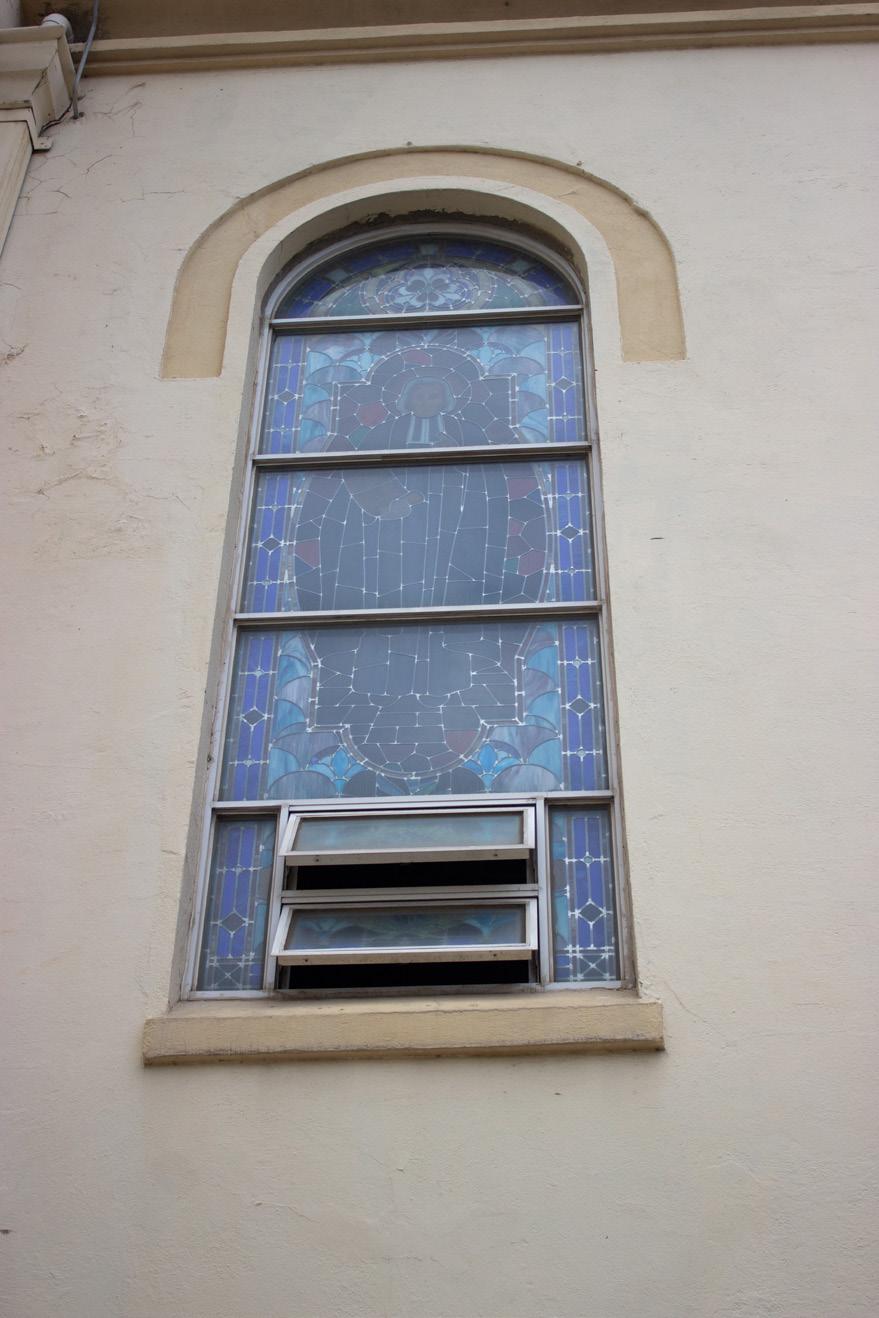
The current building was built in 1911 to replace the 100-year building that was destroyed in the 1907 earthquake. The cathedral was in deteriorated condition over the years and restoration started in 2008 to get the church back to its former glory or as close as possible.


 Examination of stainglass windows at church
Examination of stainglass windows at church
Heading back on the main back on to South Camp Road heading south and turning onto East Queen Street takes you to its name’s sake, East Queen Street Baptist Church. The church was made in January 1822 by an African American preacher, George Liele, and was the largest Baptist church in the world at the time.





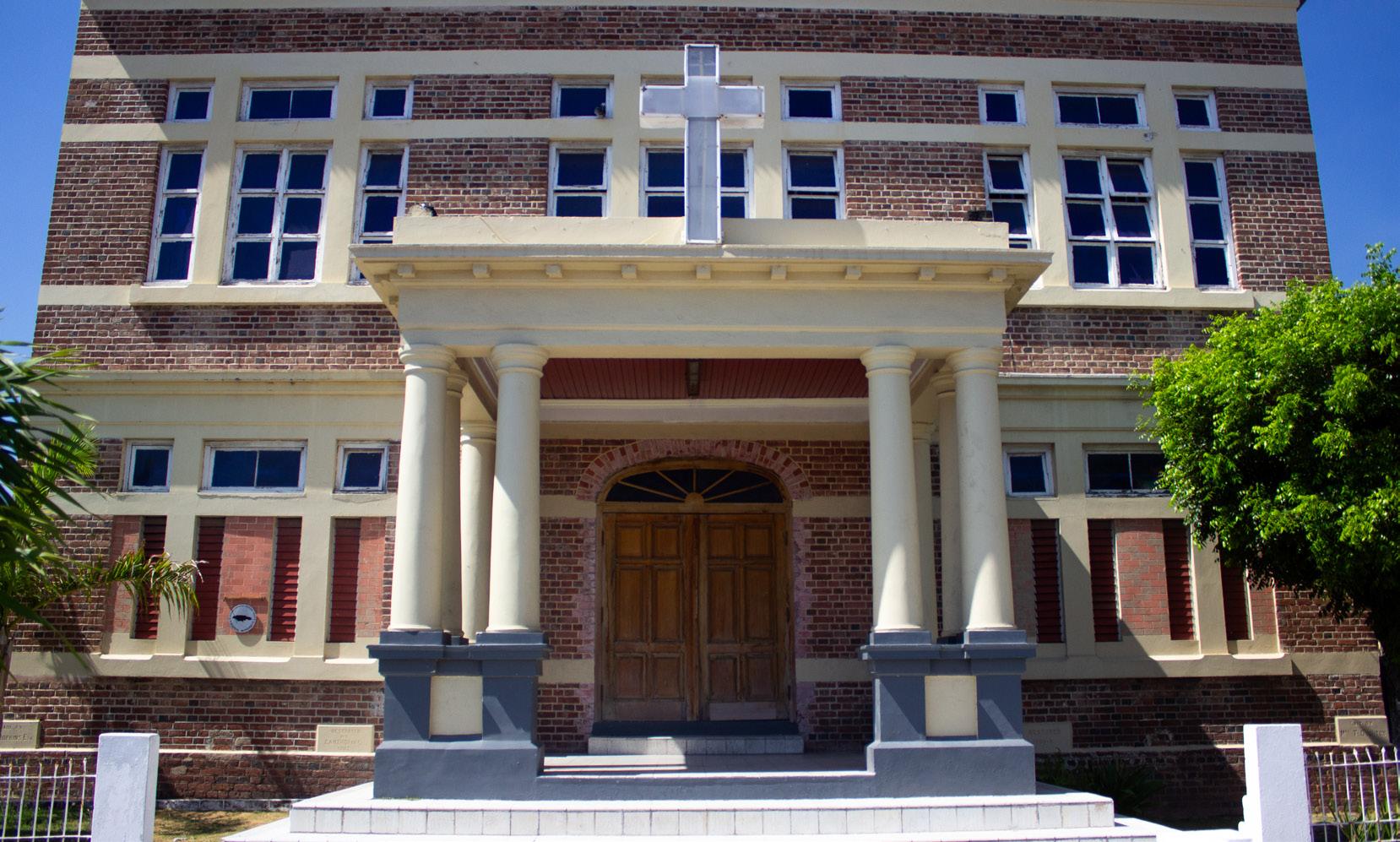





In 1864 a Victorian Candelabrum was commissioned for the Reverend Samuel Oughton by the congregation. He was an outstanding pastor and worked hard to expand church and develop the black communities. He served from 1829 to 1869.
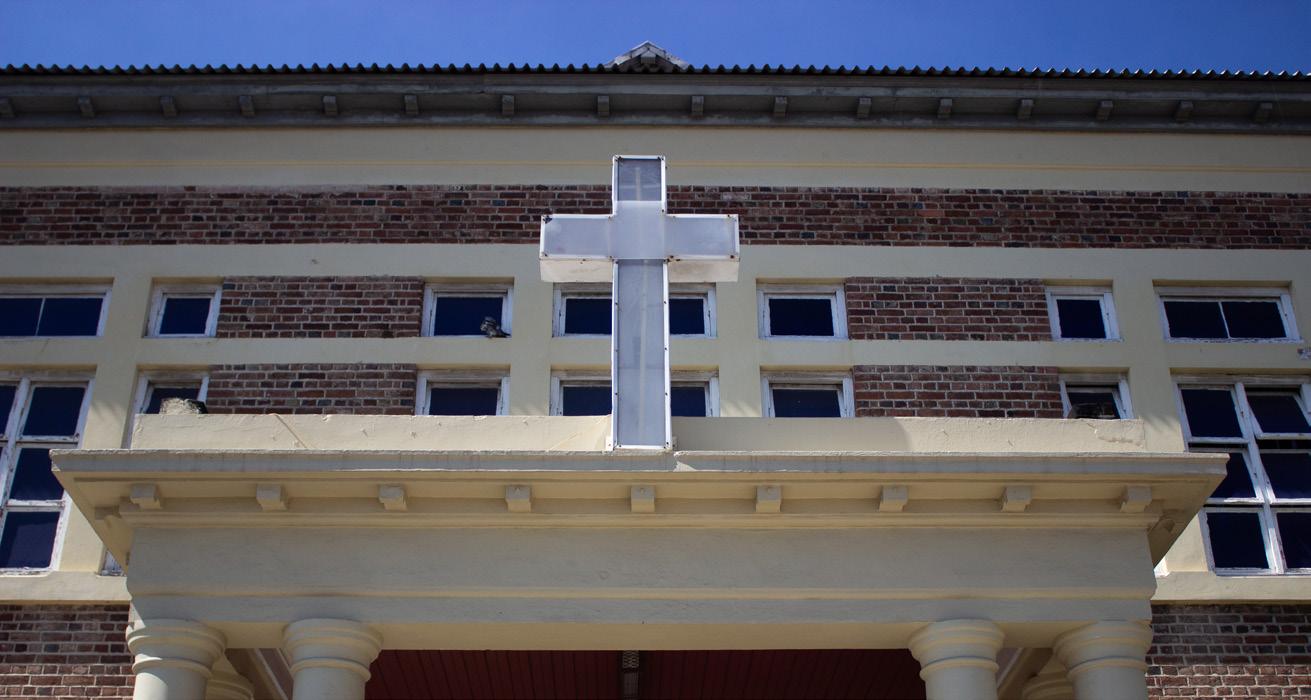 Front view of East Queen Baptist Church
Front view of East Queen Baptist Church
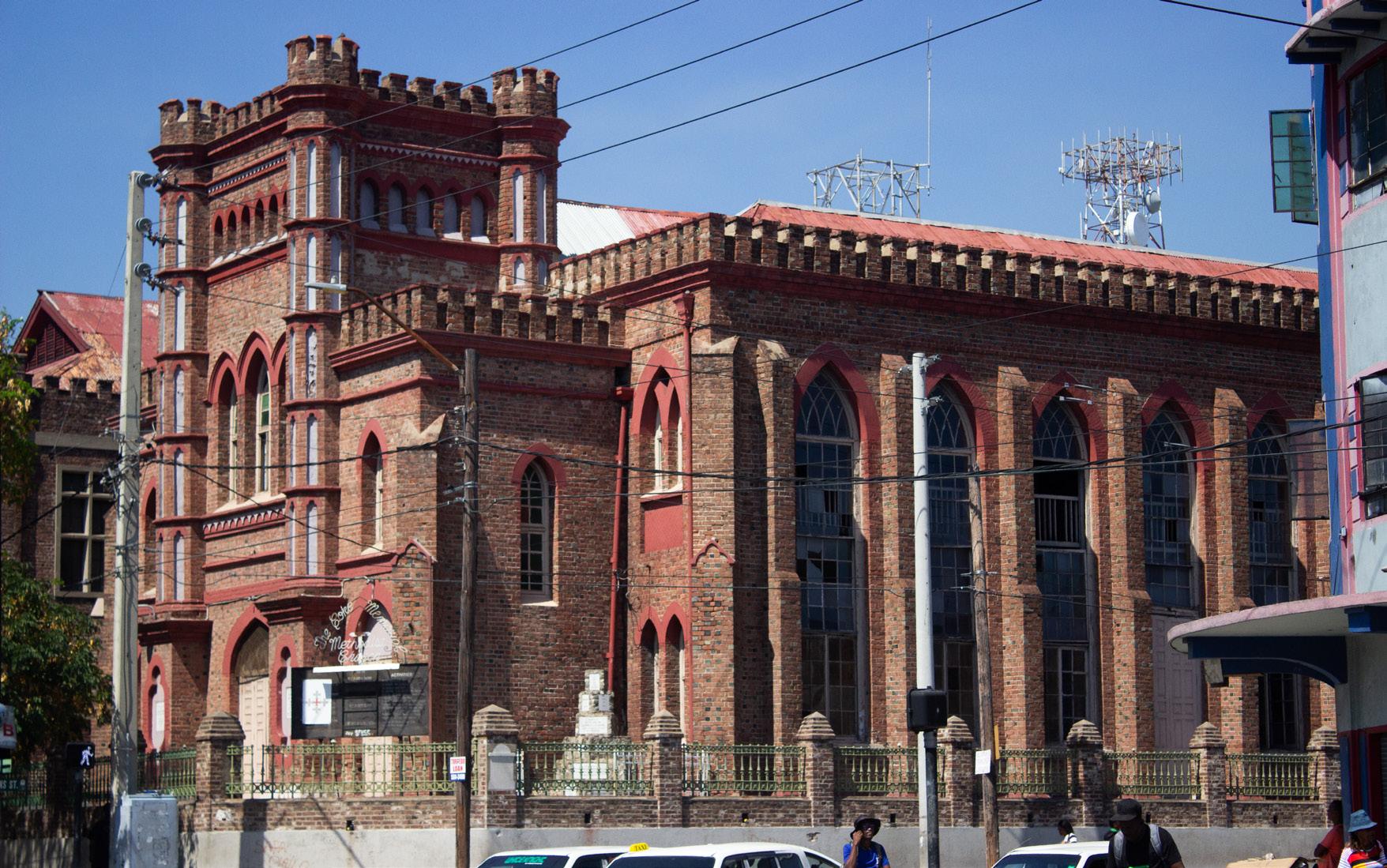
On the same road continuing to down towards parade with meet with Coke Methodist Church. The beginning of this church was a planter’s house in 1790 which had to be remodeled. It opened as the Parade Capel in 1792. There was a period when the chapel was closed by a Grand Jury because they were a threat to the peace and quiet in the neighborhood. It was replaced and renamed to Coke Memorial Chapel in 1841 in honor of their founder Rev’d Dr. Thomas Coke the founder of Methodism in Jamaica.



 Side view of Coke Methodist Church from Saint Williams Grant Park
Side view of Coke Methodist Church from Saint Williams Grant Park




The church was heavily damaged after an earthquake in 1907 and had to be completely rebuilt to the building presently there. It was built with the Neo-Gothic style with red brick calling back to England’s Middle Ages churches. The church stands as the Pride of Parde Street.
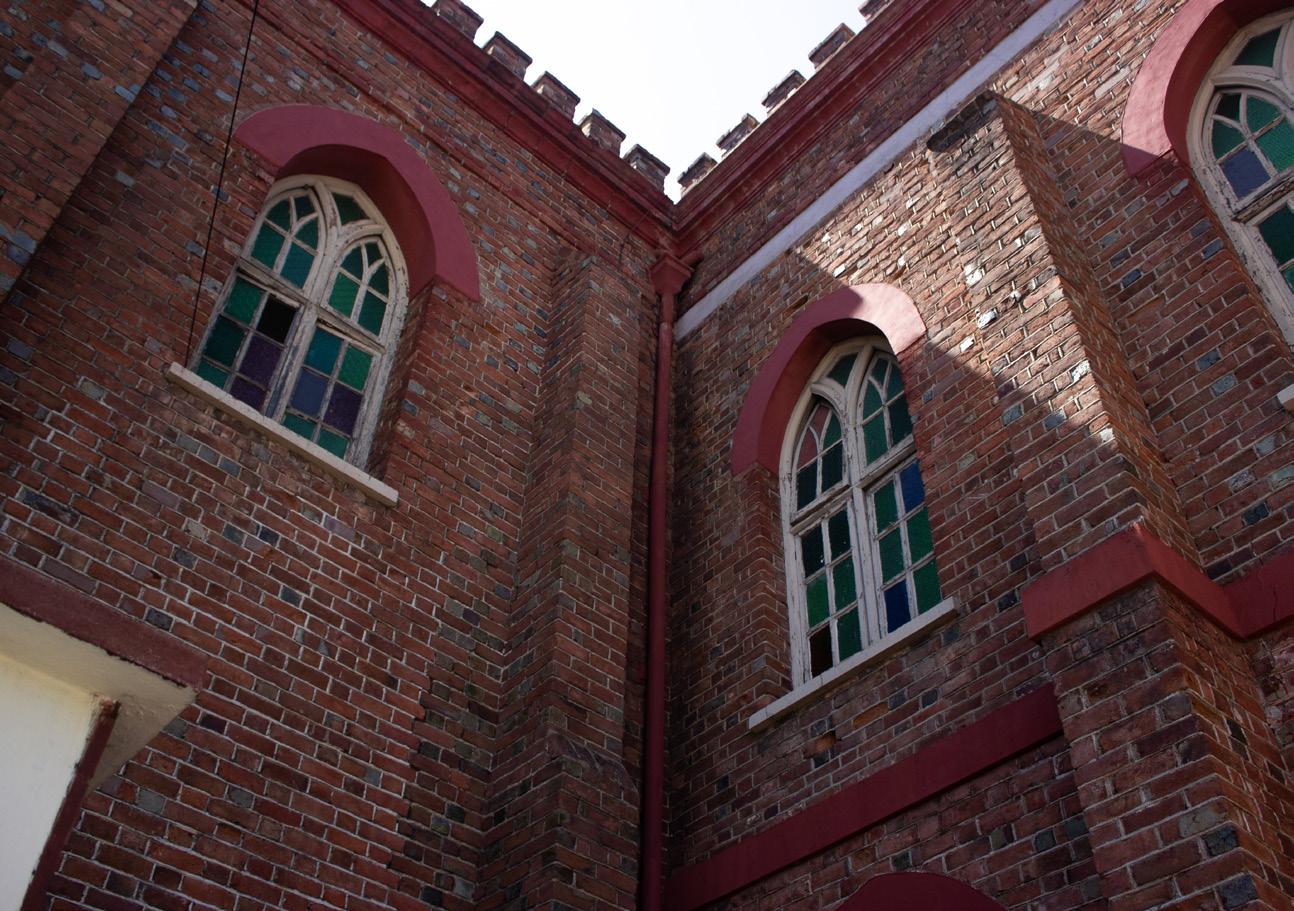
 Close up of the front of the church
Close up of the front of the church



Right across the road from the Coke Methodist Church is the Saint Williams Grant Park. Originally named Victoria Park after Queen Victorica. It was named after St. Willliam Grant a labour leader and black nationalist in 1977. The area was a parade ground for British soldiers in the 1700s. It was the place many important people hosted large audiences

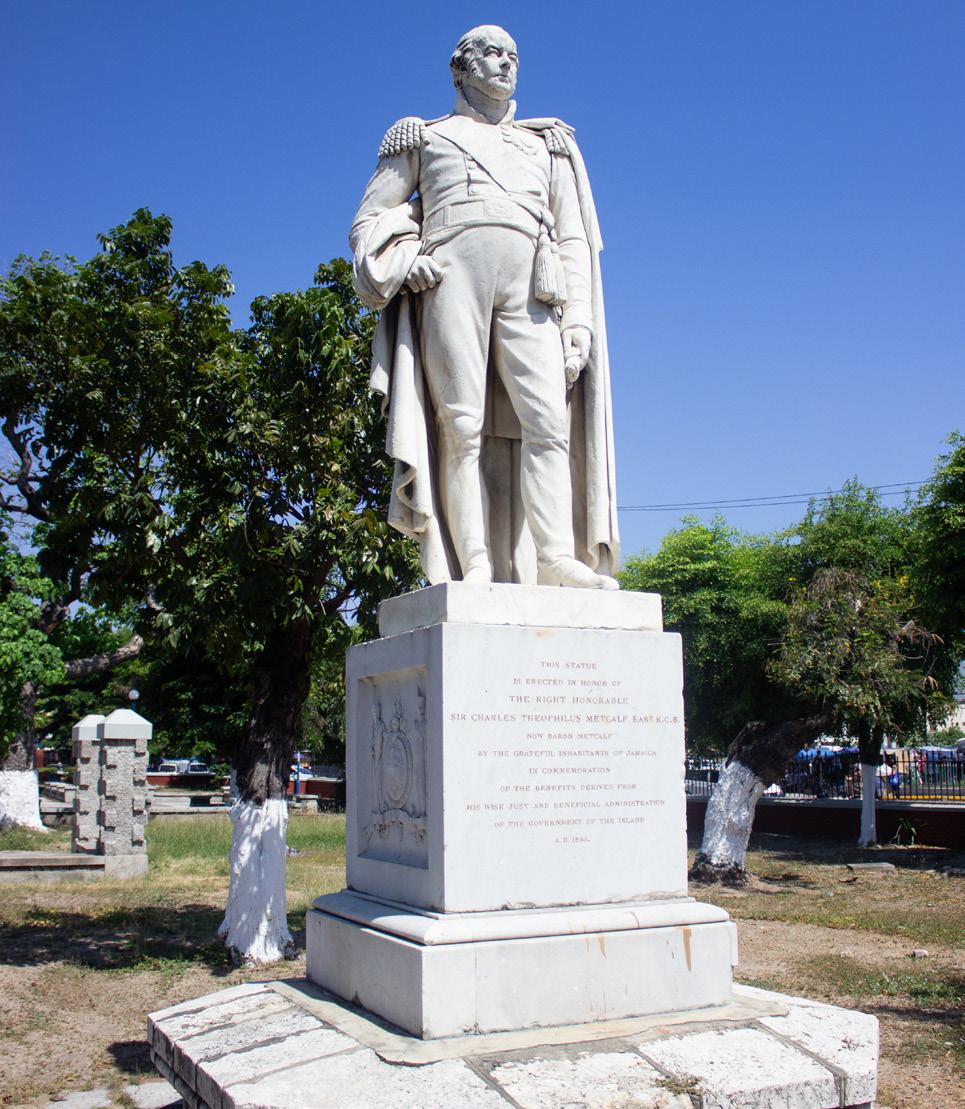
 Statue of Rt. Excellent Sir Alexander
Statue of Rt. Excellent Sir Alexander

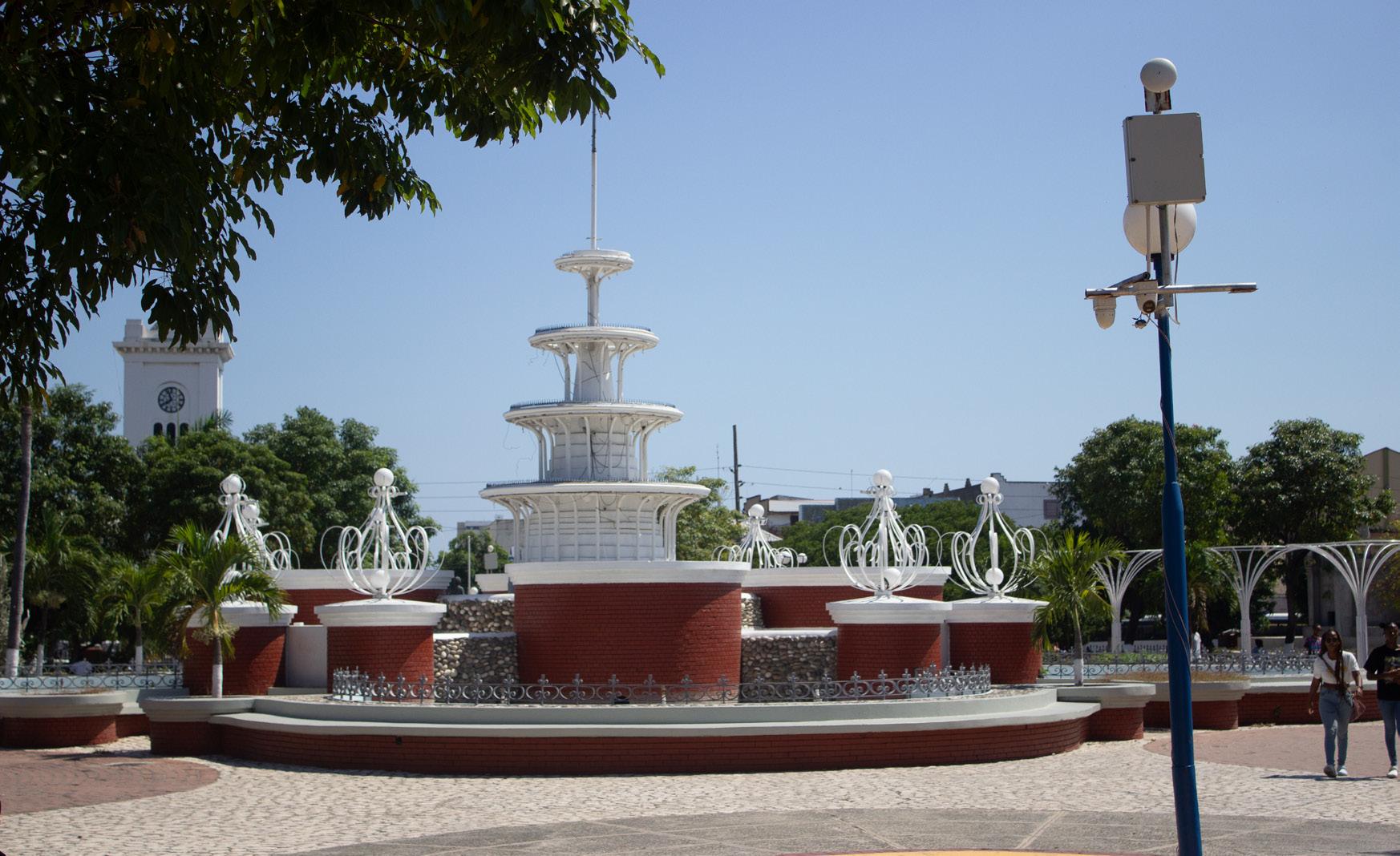




The park is home to multiple monuments of people who have made significant contributions in Jamaican history. Rt Excellent Norman Manley and Rt. Excellent Sir Alexander Bustamante are each at the different entrances of the park. With The statue of Queen Victoria, the Honorable Edward Jordon and Sir Charles Theophilus Metclaf.
While the park is in current repairs by the Kingston and St Andre Municipal Corporation, the park still serves as a quiet place to take a rest from the hustle and bustle in Parade.
Statue of the Honorable Edward Jordon

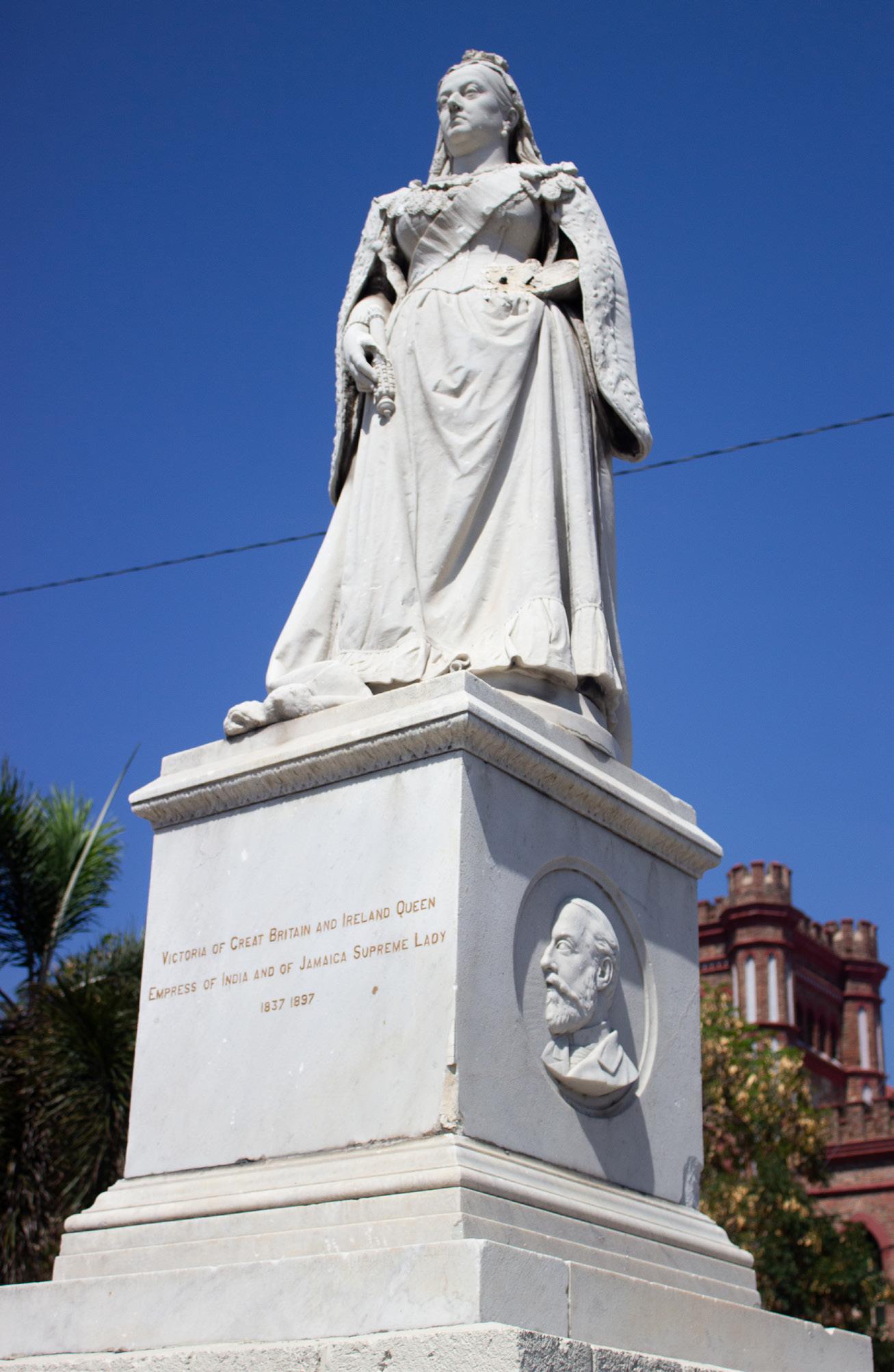









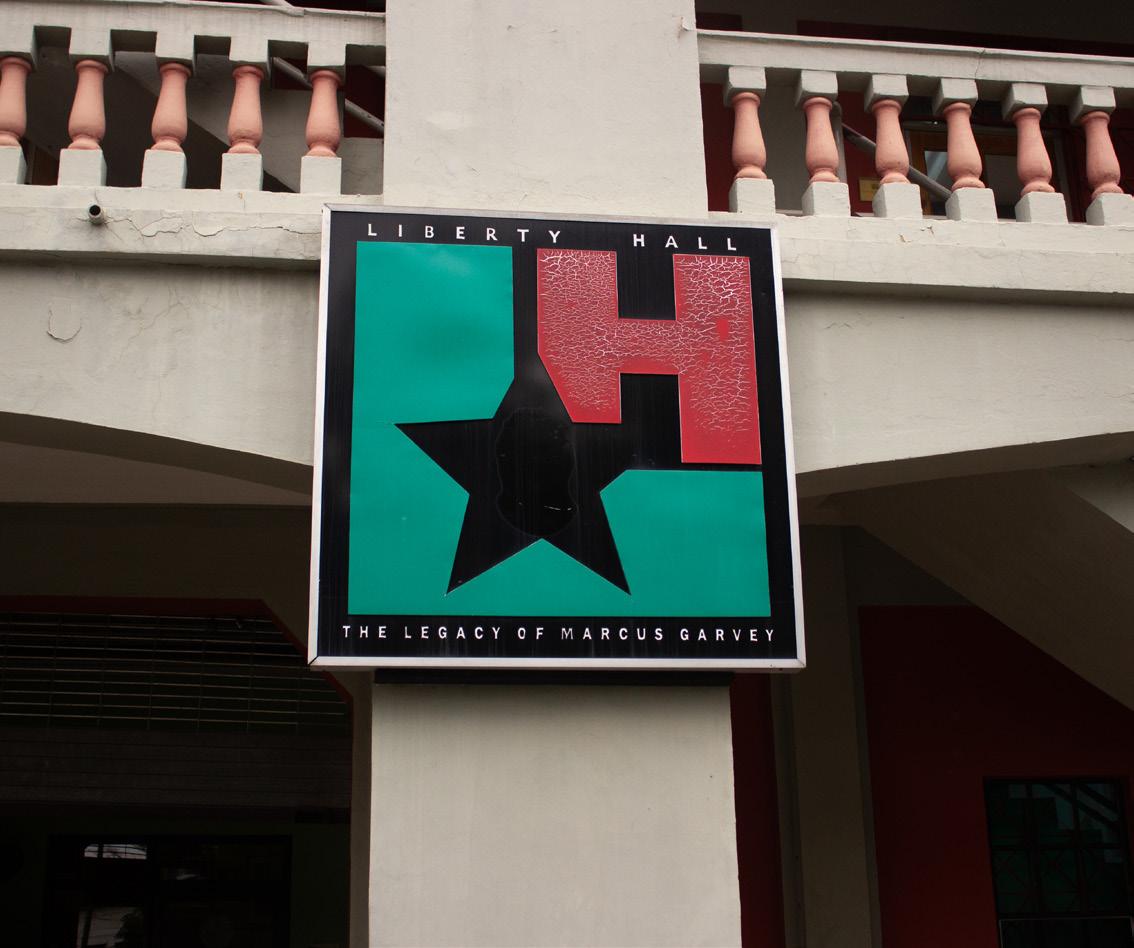

Going around round the parade and going onto Orange Street then taking a right on to Beeston Street then taking another right onto King Street carries you to Liberty Hall. It was the home of the Universal Negro Improvement Association that was created by our National Hero Rt. Excellent Marcus Mosiah Garvey 1923. It home to all sorts of entertainment that was fully ran and owned by black people. It was bought for £800 which is £60,626.15 or $11,661,667.32JMD in today’s value. It made a massive impact, and many Liberty Halls were erected in different parts of the world.





The hall was sold in the 1930s due to financial problems and the building went derelict. The government bought the building in 1987 and was restored and reopened in 2003 with the Garvey Research Reference Library and Garvey
Multimedia Computer Centre. It has been managed by the Institute of Jamaica and still running.


 Front view of Liberty Hall
Front view of Liberty Hall

Going down from Kings Street Back onto Parade and make your way onto Sutton Street, then taking a right onto Duke Street you will meet The Jamaica National Heritage Trust or also named the Hibbert House. The house was originally built by a young merchant named Thomas Hibbert in 1755. After his death the house stood as a representation of Kingston Merchants Glory days. The Georgian style of architecture was very fashionable for rich merchants like Hibbert, with symmetrical structure constructed with brick, stone and timber.




After Hibbert died the house was held in private hands until was purchased from the widow of Dr. Solomon Deleon for use as a headquarters and residence for a general due its prime location near the water. It was used by many generals after this and got the nickname of “Headquarters House.”
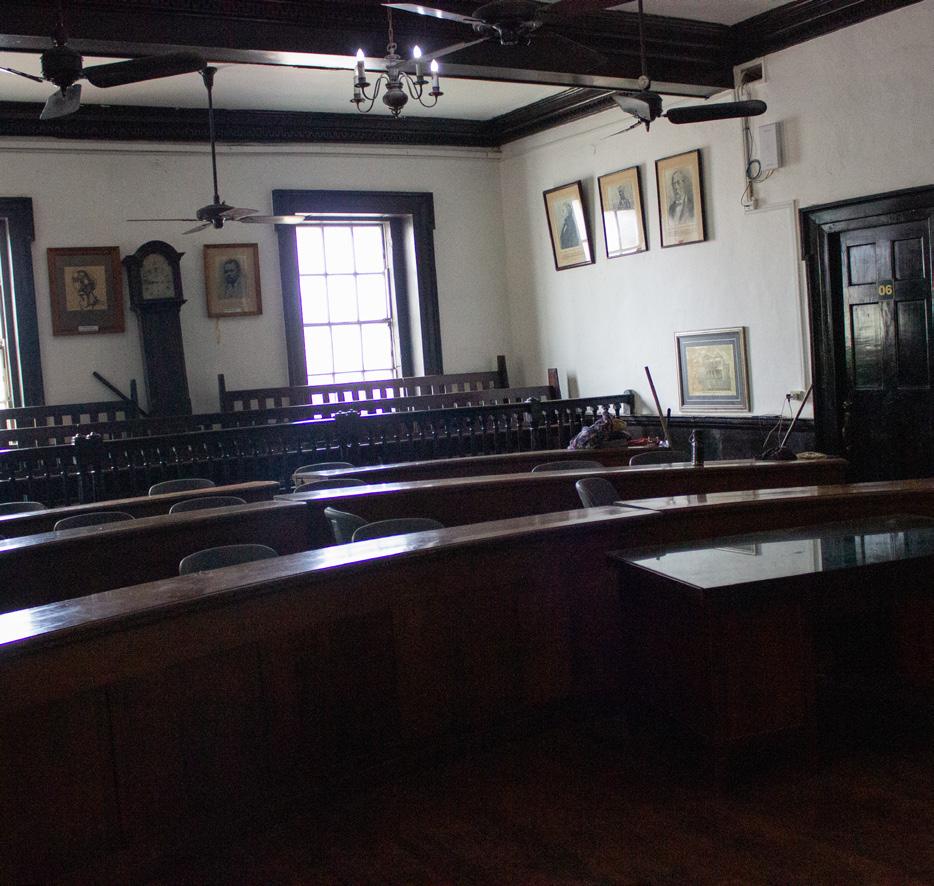



The Government purchased the house after the capital was moved from Spanish Town to Kingston in 1872. The house was purchased for £5000 which is £708,568.14 in today’s money or $136,295,739JMD. It was used as the permanent seat of the Legislation from 1872 to 1960.
The house has been used as its headquaters by the Jamaica National Heritage Trust since 1983.
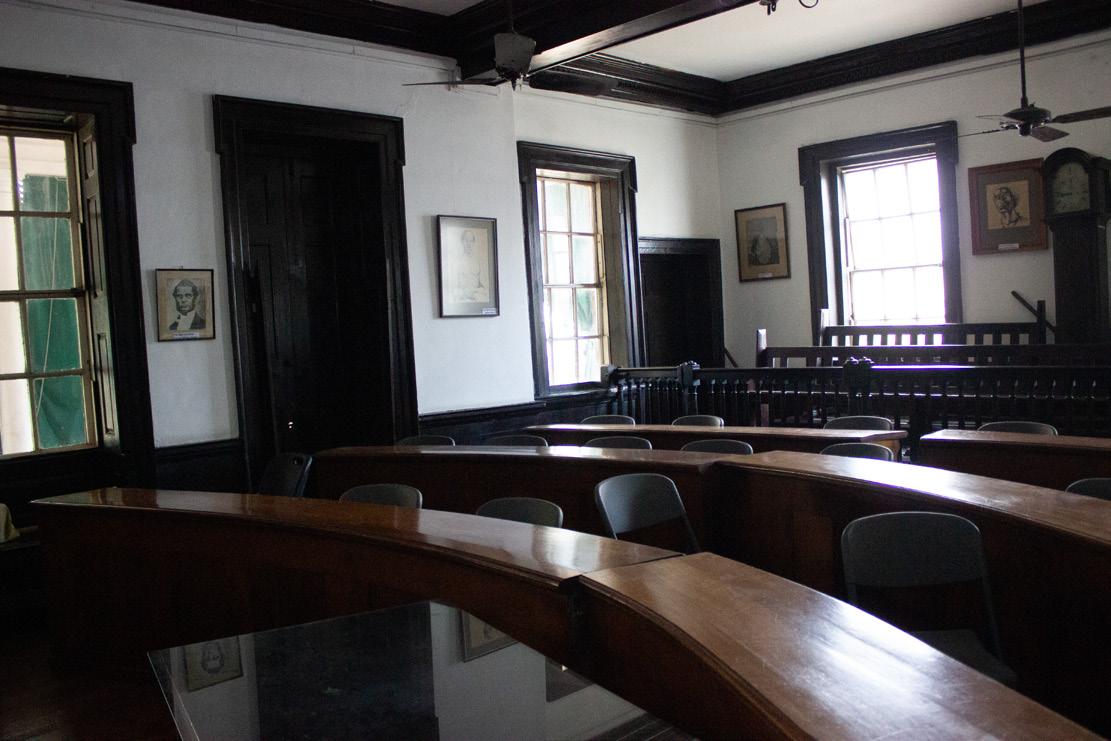 Below: The View Ground floor of JNHT
Parliment Seats at ground floor of JNHT
Below: The View Ground floor of JNHT
Parliment Seats at ground floor of JNHT

Going straight onto Beeston Street then taking a right into East Street and keep going straight you will end up at The Institute of Jamaica. The Institute was created in 1879 to encourage exploration of Literature, Science and Art, it was the major agent for helping the government to preserve and promote Jamaican culture.


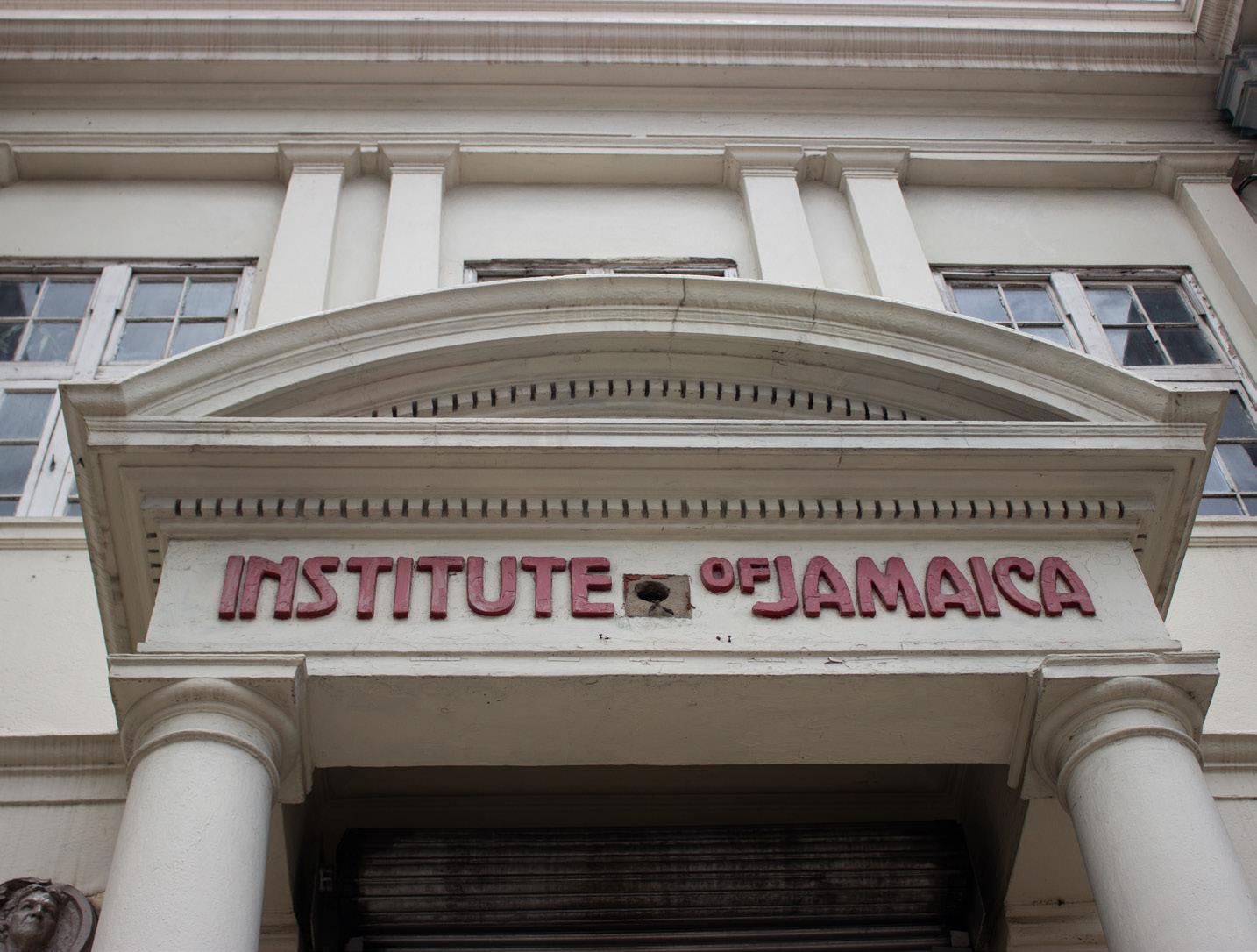


They continued to expand over the years with the science museum (1879), the History Division for flora and fauna (1974), the National Library (1979), the Reference Library (1879) and the Junior Centre.
Edna Manley would make a tribute to them for their encouragement of the arts in Jamaica.

 Close up of plaques at the Institute of Jamaica
Close up of plaques at the Institute of Jamaica

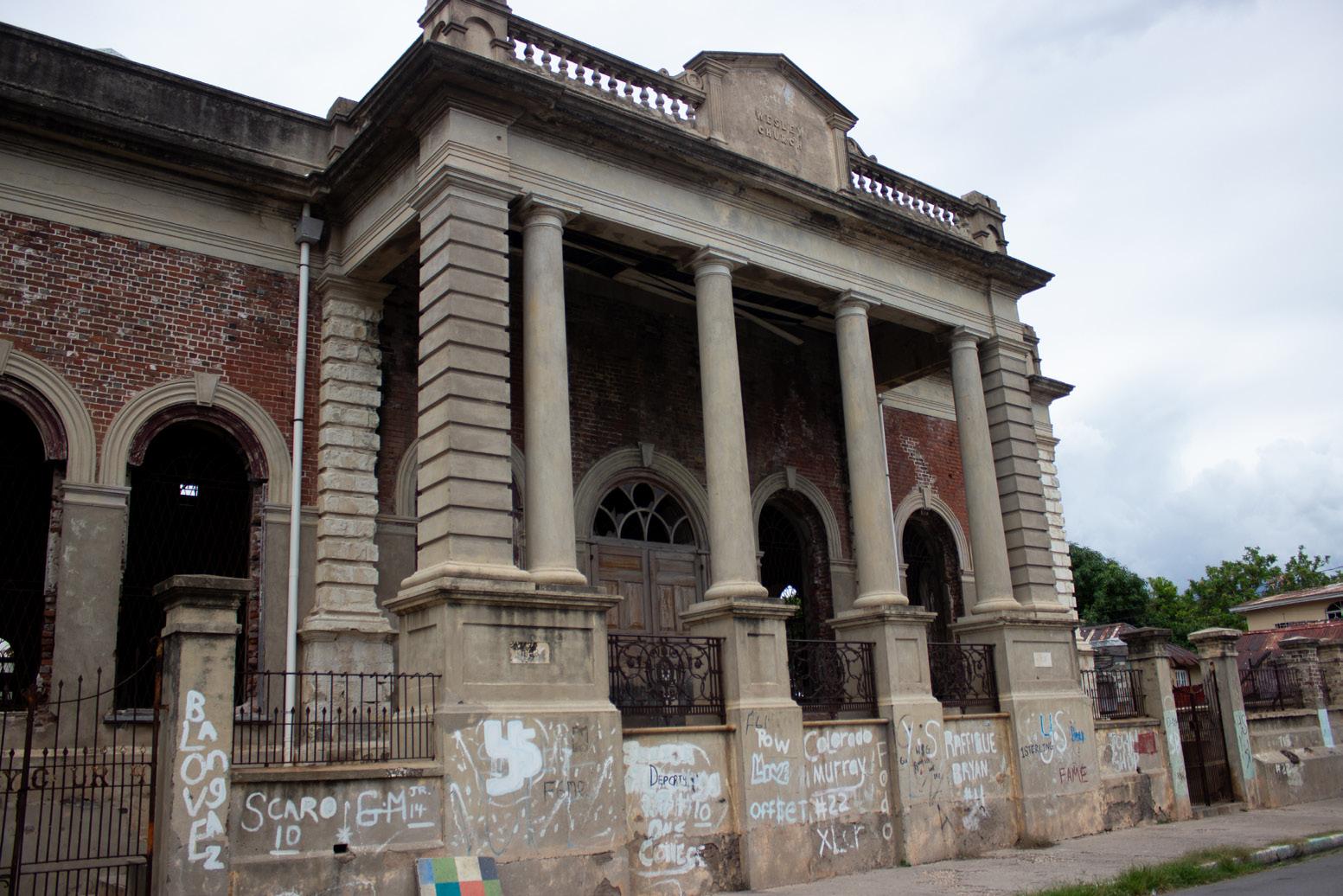
At the end of east street and turning left onto Water Lane the left onto Hanover Street then a right onto Tower Street, some ways down will be Westly Methodist Church. This church was built in 1825 is a Jamaican Georgian building with elements of Palladio. This was during time of Consolidated Slave Laws which helped with hindering non-conformist theology of Methodists, where they treated all as equal. The church played a significant role in the integration of coloureds, blacks and whites because it was one of the only churches that slaves were able to be used for worship.


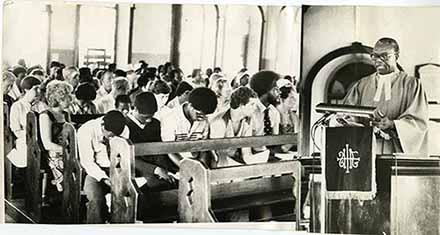 Side view of Wesly Methodist Church
Side view of Wesly Methodist Church
The church is connected to many prominent people in history like Henry Belby who was a minister who gave courage to the National Hero Sam Sharpe, who said to him “Minister I would rather die upon yonder gallows than live in slavery.”
Although the church has such a rich history, maintaining the church has been an issue. The church is in an inner-city area and the building has had its walls spray painted numerous times and all their windows have been replaced with bars or stayed broken.

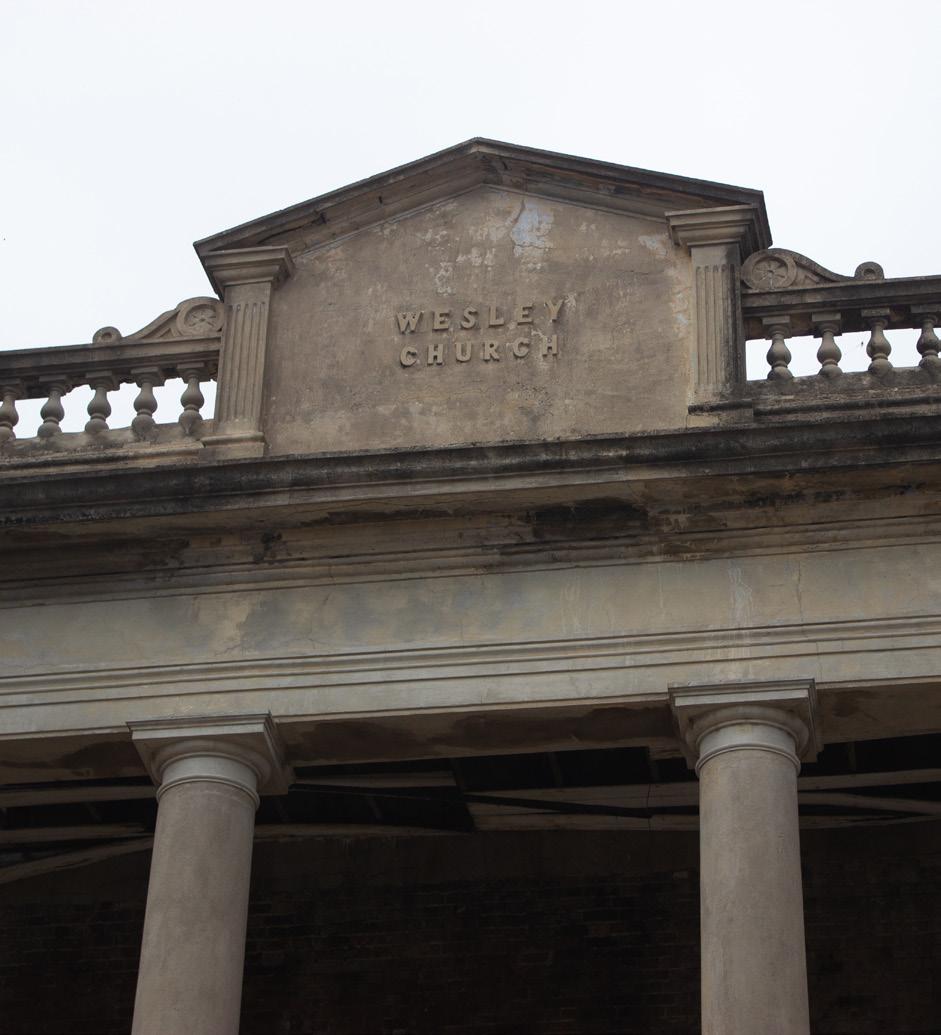
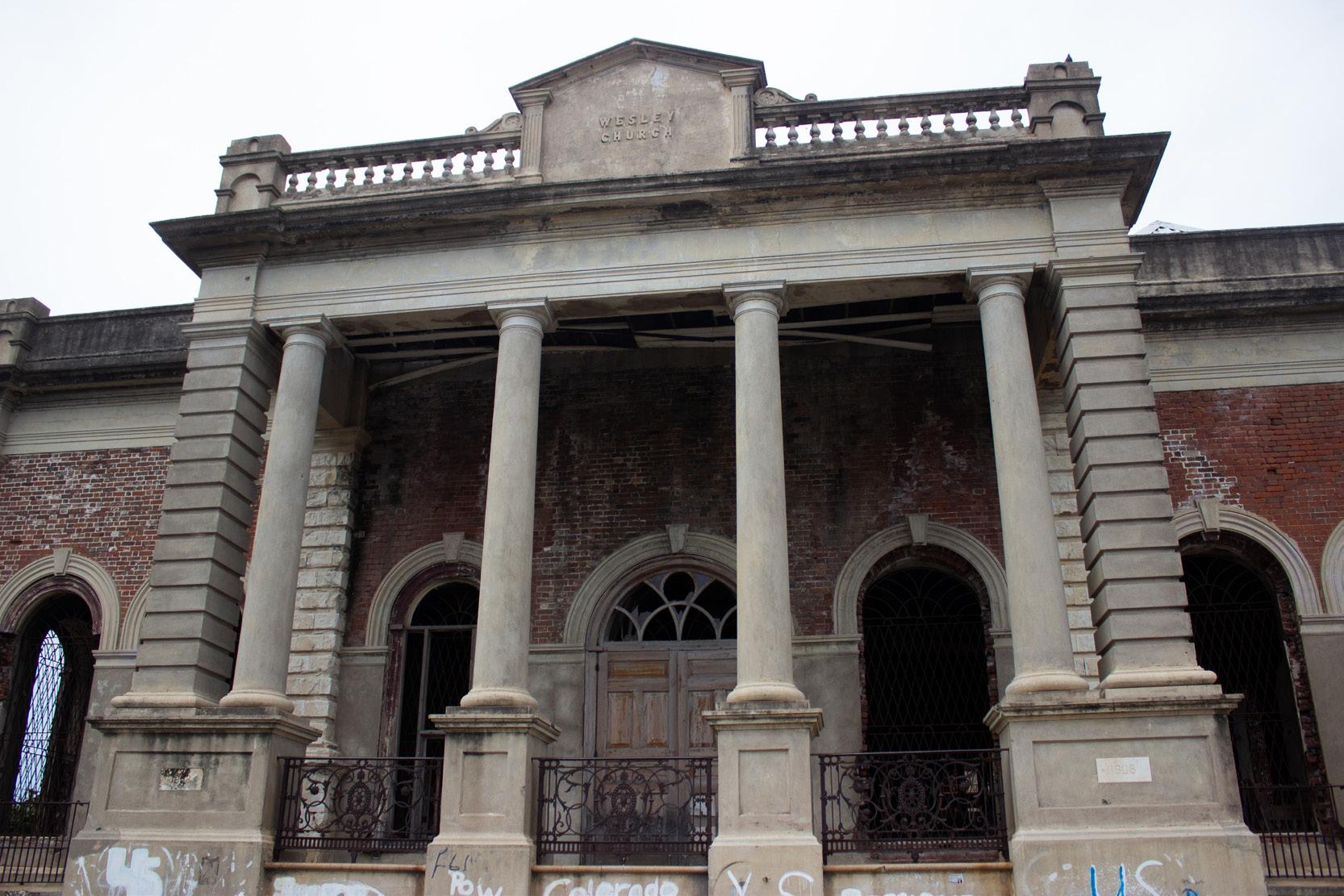
 Close up to Wesly Church name plate
Close up to Wesly Church name plate

Turning right on Gold Street and straight onto Port Royal Street then turn left onto East Street and take it to Ocean Boulevard to get to Waterfront. It is the 7th largest natural harbor in the Caribbean. This area has as much as 275 years of history along its waters and Victoria pier would be an important part of it. Many cruise ships would see its shores from the 1940s to 1960s and welcomed visitors like dignitaries, kings, queens, presidents, heads of state and Hollywood stars. It would also be where the HMT Empire Windrush would depart in 1948. Between 1968 and 1970 many of the finger piers and removal of Victoria market and it’s clock tower making way for Ocean boulevard and the redevelopment of the area
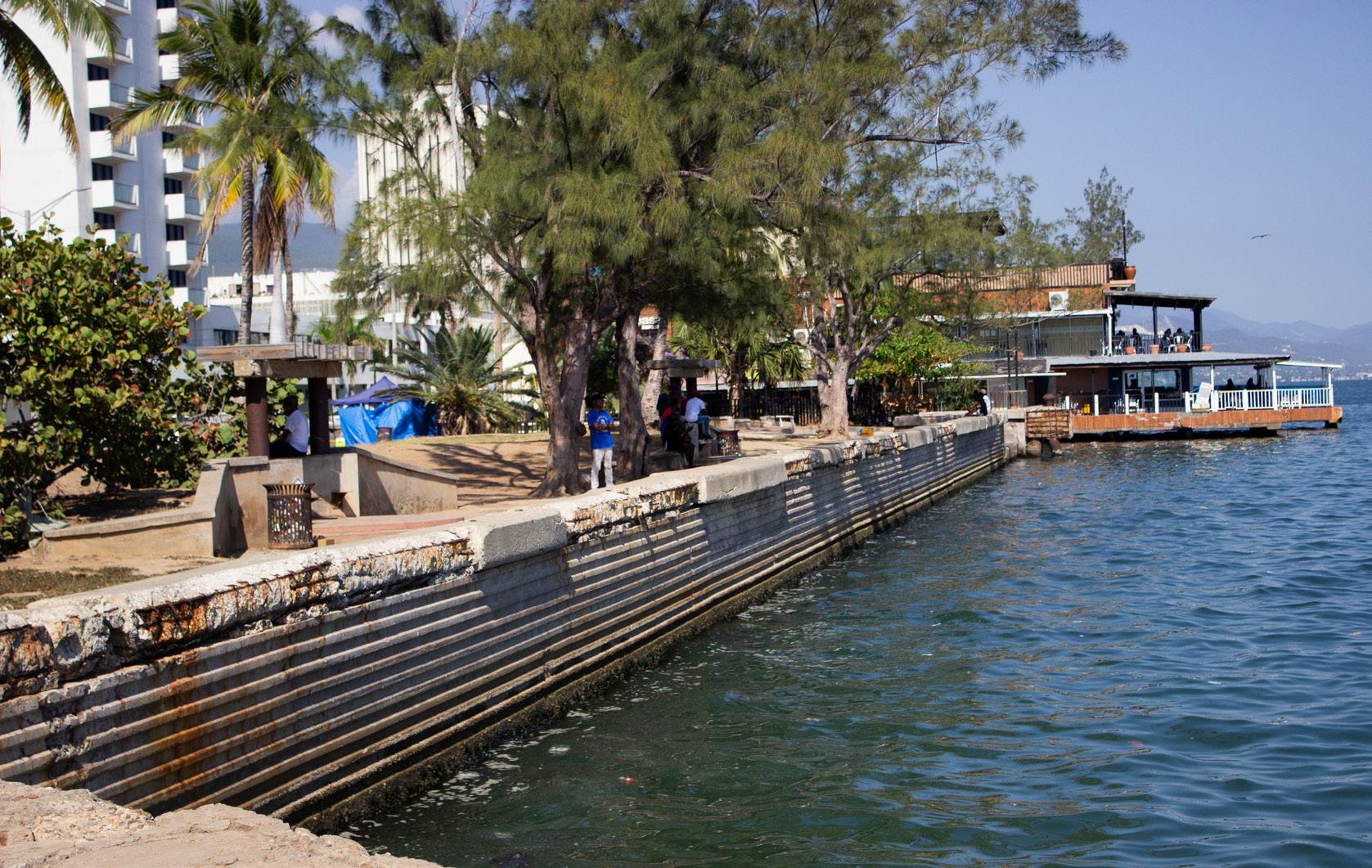

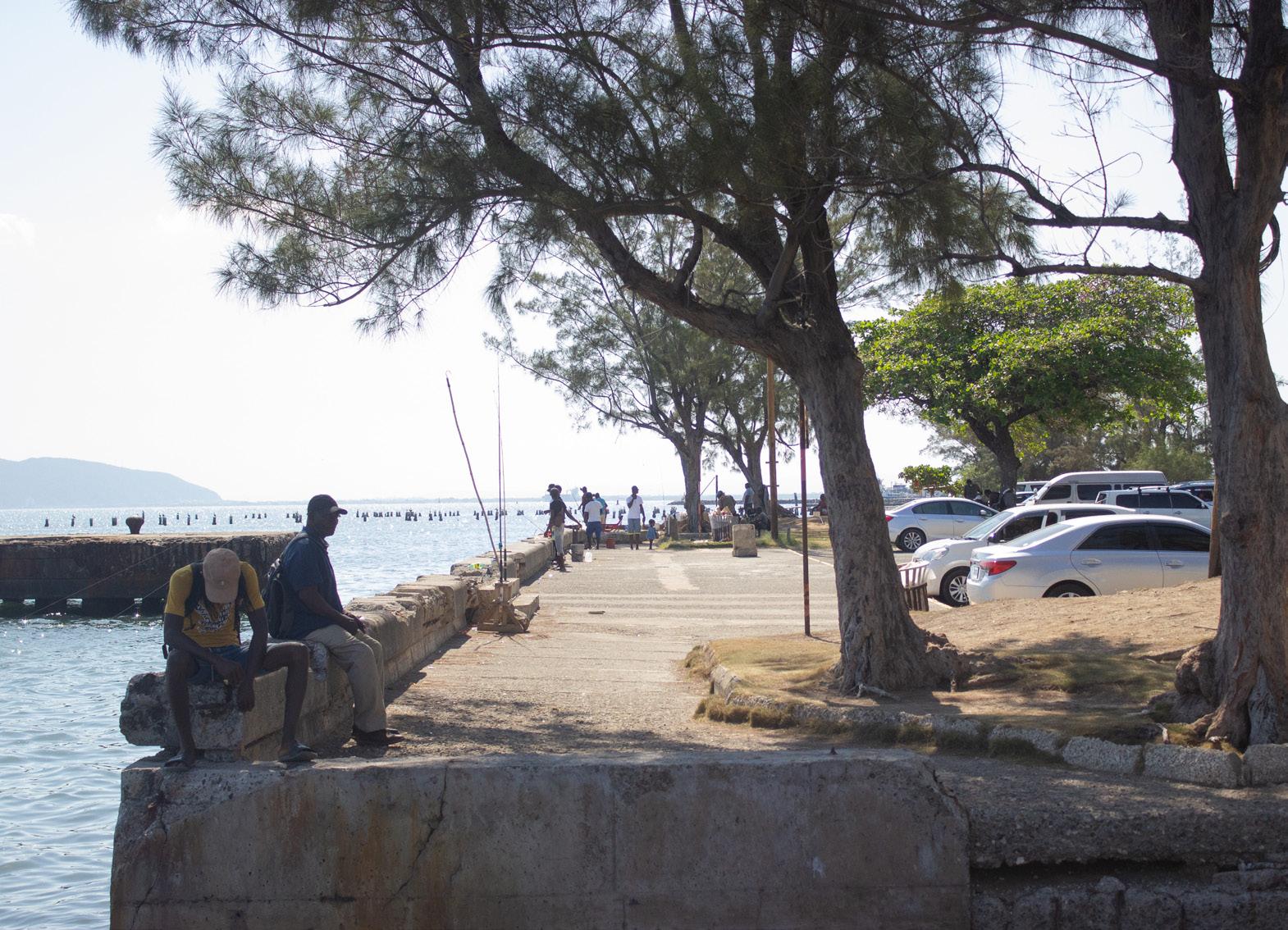



Currently the waterfront is used to host large events of the streets, like the Anual Fireworks show every New Years. Or people will have a stroll along the shore or finshermen will fish. People also come to go to the restaurants at the repaired victoria peir.
 Side view of Waterfront with fishermen and passerby
Side view of Waterfront with fishermen and passerby




Along the Victoria Peir you can find the Negro Aroused Statue that can found along the water. The original statue was made by Edna Manley in 1935 was a much smaller wooden statue that was exhibited in 1937, it is currently now a permanent installment at the National Gallery till this very day. The replica at waterfront today is a recreation by Edna Manley in 1938 for the Jamaican workers and the Workers Movement who were fighting for better pay. The statue was first made then destroyed by warehouse fire, then the statute at it presently at waterfront in 1991 was made.
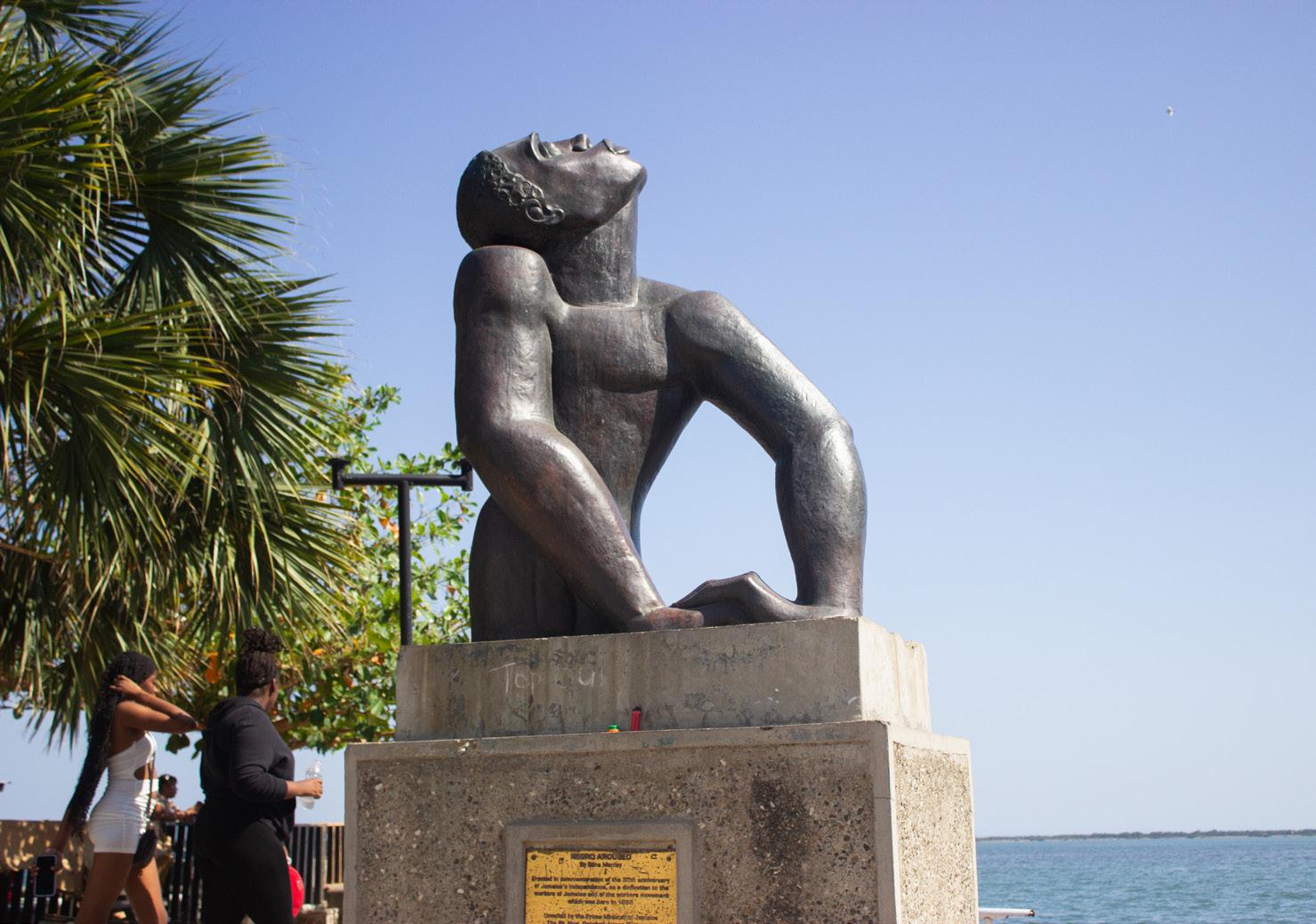




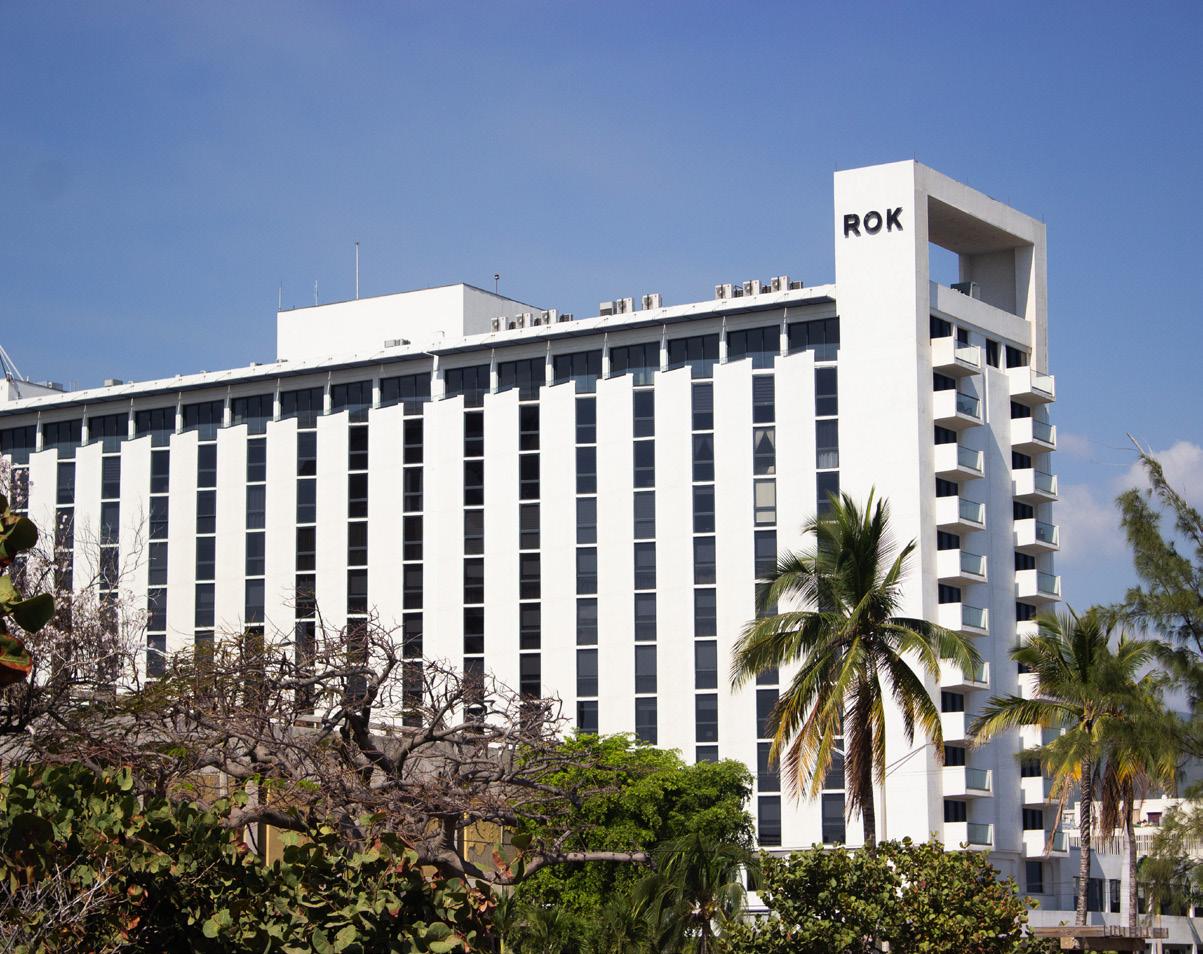



On the right side of the road, you can find the ROK Hotel, which was formally the Oceana Hotel. The building with some renovations is the same building that has been there since 1977. The building has many important guests like Freddie Jackson in 1987, Winnie Mandela in 1991, the hotel has been an active part of many things with many seminars and meets being hosted there. After some time, the hotel closed in 1993 due to financial struggles and various government sectors like the Ministry of Health, Urban Development Corporation and Industrial Disputes Tribunal made their home in the building.

The former hotel went for sale in 2013 and the National Heath Fund was approved for the sale. The former hotel went back on sale and was purchased by the Hilton and was reopened as ROK.



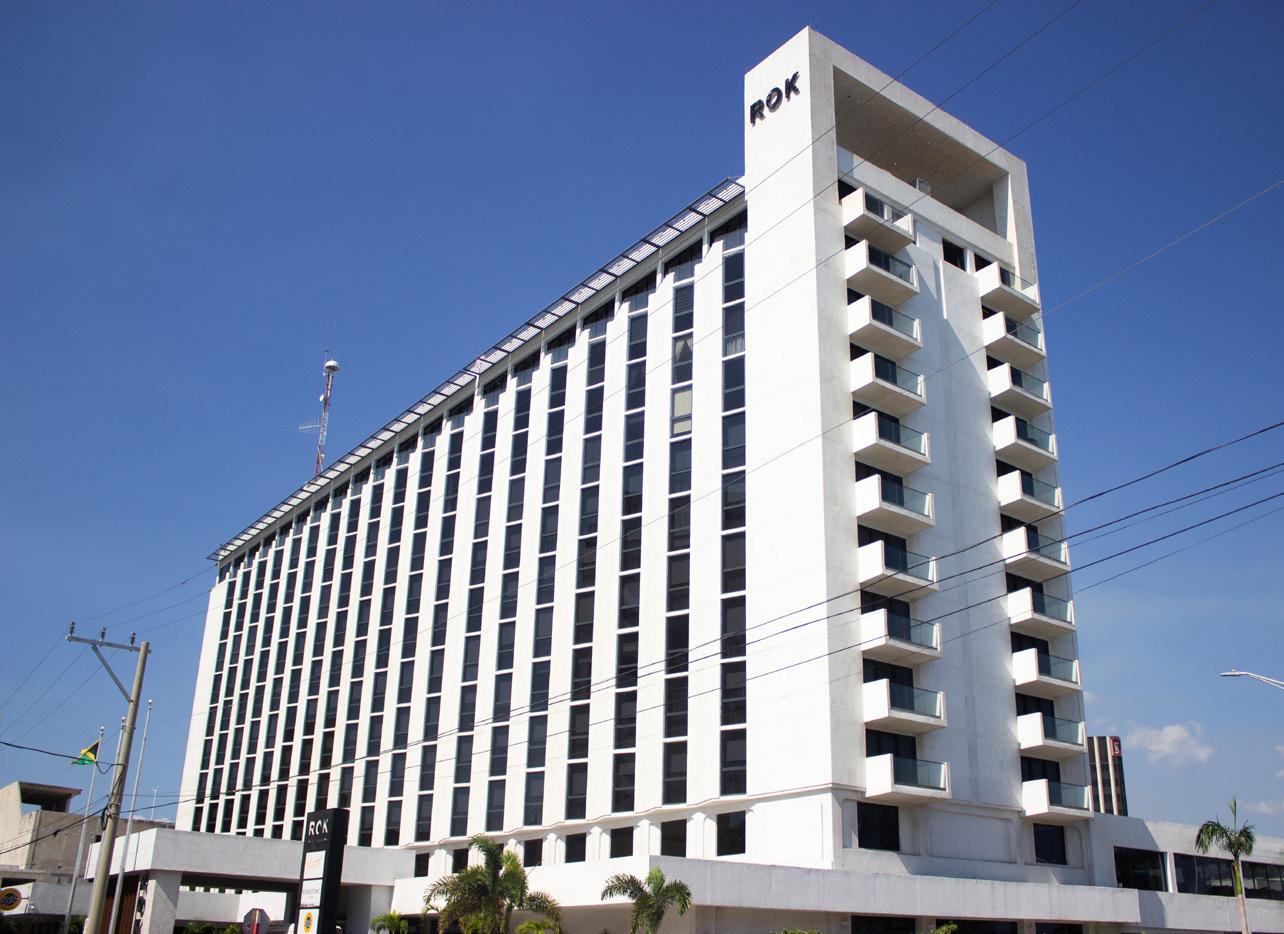 Full Veiw of the former Oceana Hotel
Full Veiw of the former Oceana Hotel


Going back onto Ocean Boulevard and going up Duke Street passing Heart Trust and going on the bend, on East Street there will be a building which is one the grounds of the Central Kingston Skills Training Centre and D.O.S 2009 Limited. The house is a one of the few remaining Georgian buildings left in Kingston. The house somehow blends in with its environment but also stands out as the oldest building surrounded by modern buildings. The house was associated with the Malabre family who were descendants of Haitian Émigré. The family had sought asylum to Jamica during the revolution in Haiti.


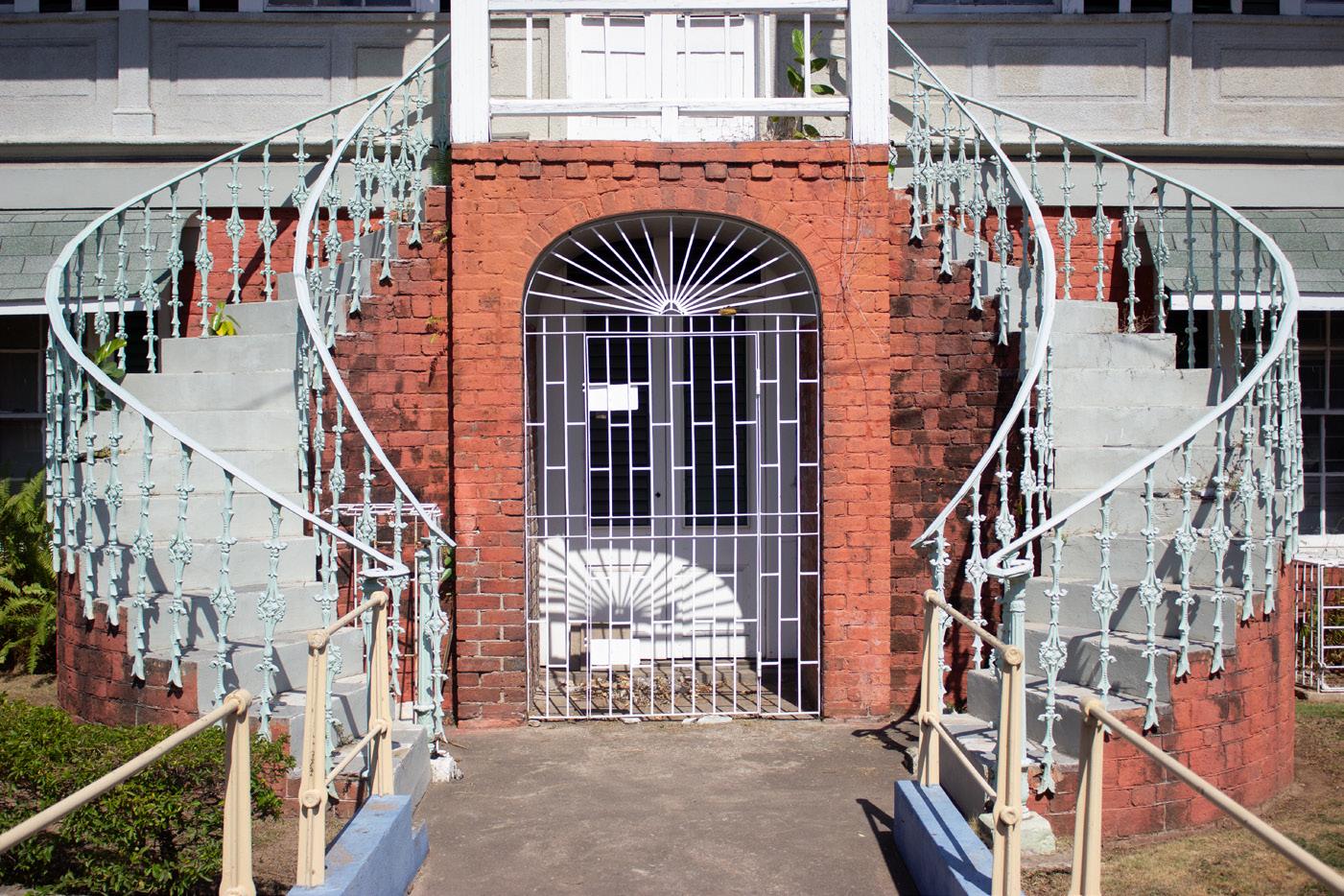



 Close up of Stairs at 150 East Street House
Close up of Stairs at 150 East Street House

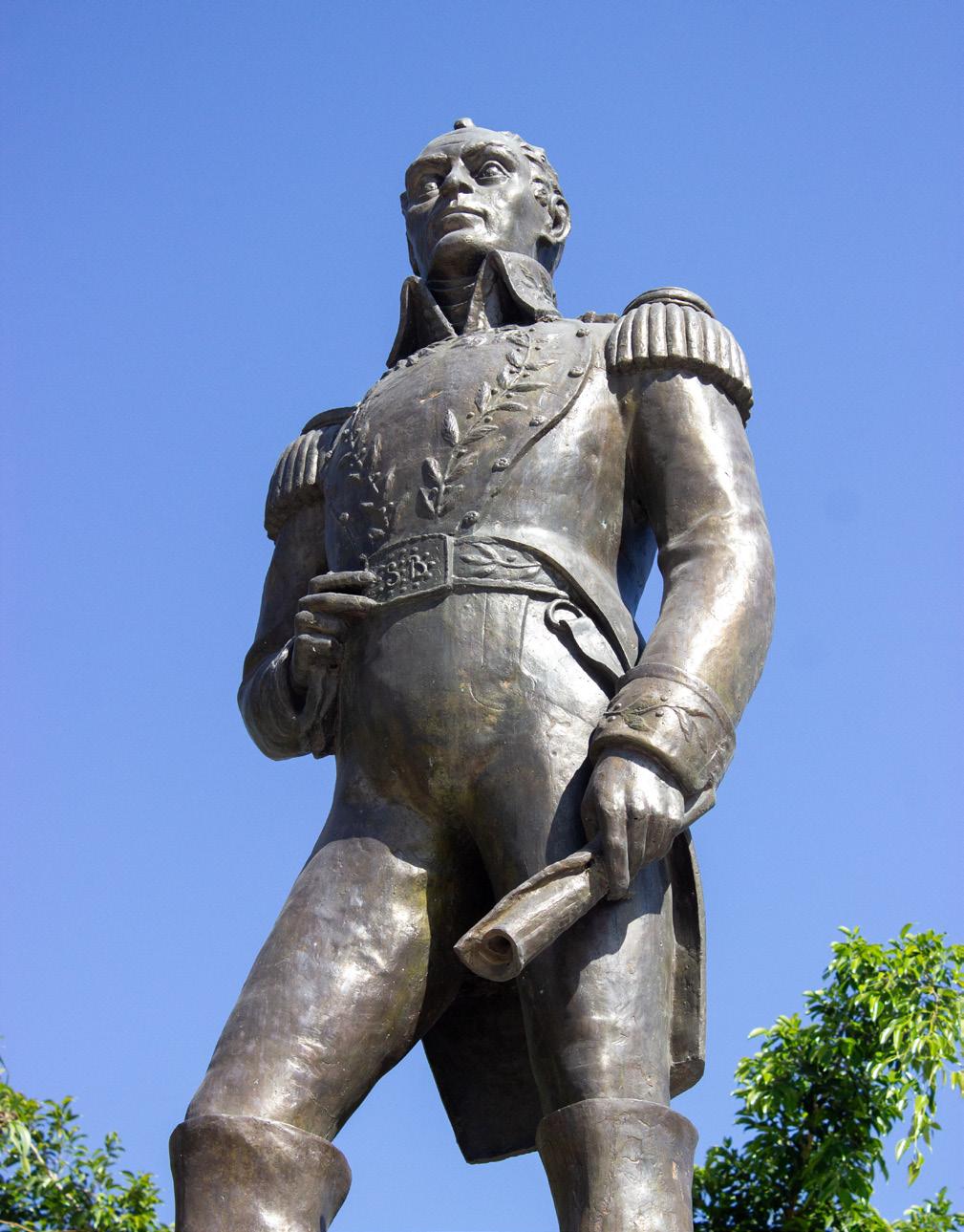


Going off Duke Street into Heros Circle in front of the Ministry of Education, Youth and Information is the home of the Simon Bolivar Statue. It might have been forgotten unless you were paying attention, but this man made an impact in the relationship between Jamaica and Spanish speaking countries. He was a man that was not tied to the norm of the 1815s which came through in the ‘Jamaican Letter’ exhibiting his thoughts on the solidarity, security, independence and the unity for both South American and Caribbean countries.


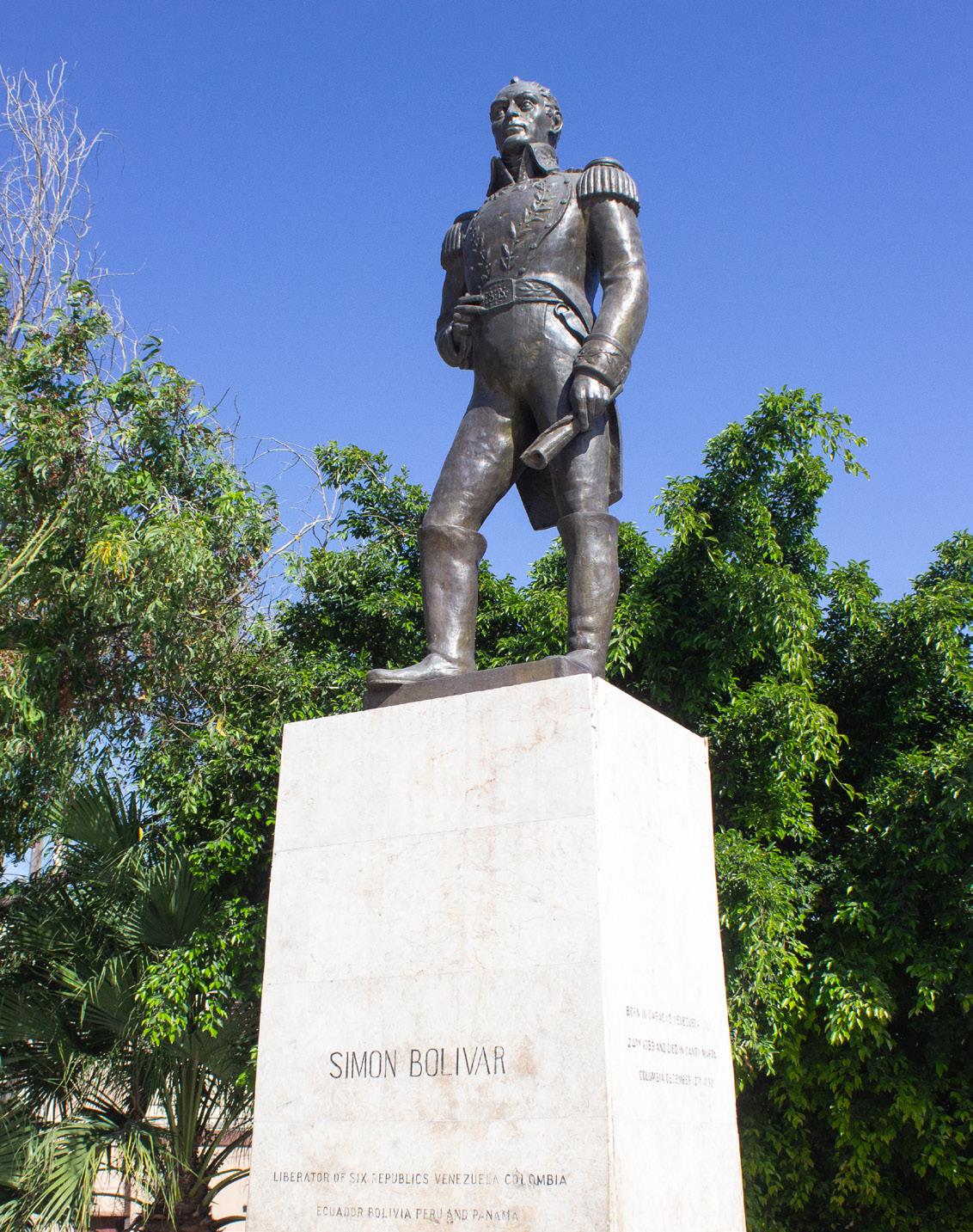


 Left: Close up left side view of Simon Bolivar Statue
Left: Close up left side view of Simon Bolivar Statue
. Jamaica National Heritage Trust - Jamaica - Hibbert House Headquarters House. (n.d.). http://www.jnht.com/site_hibbert_house_headquarters_house.php
. Jamaica National Heritage Trust - Jamaica - Institute of Jamaica. (n.d.). http://www.jnht. com/site_institute_of_jamaica.php
150 East Street. Jamaica National Heritage Trust - Jamaia - 150 East Street, Kingston. (n.d.). http://www.jnht.com/site_150_East_Street.php
Charles Kinkead (Daily News), “Wesley Methodist,” National Library of Jamaica Digital Collection , accessed April 22, 2024, https://nljdigital.nlj.gov.jm/items/show/4394.Home Items Collections Exhibitions Request an Image About References© Copyright NLJ. All Rights Reserved
Former Oceana Hotel to open next year as ROK, Kingston. News | Jamaica Gleaner. (2019, June 4). https://jamaica-gleaner.com/article/news/20190604/former-oceana-hotel-opennext-year-rok-kingston
Harris, W. G. (n.d.). Carib Theatre. Cinema Treasures. https://cinematreasures.org/theaters/6425
History. St Andrew Parish Church. (n.d.). https://standrewparishchurch.com/home/about/ history/
Holy trinity cathedral. Jamaica National Heritage Trust - Jamaica - Holy Trinity Cathedral. (n.d.). http://www.jnht.com/site_holy_trinity_cathedral.php#:~:text=he%20Holy%20Trinity%20Cathedral%20on,Admiral%2C%20a%20New%20York%20architect. Institute of Jamaica. (n.d.). https://instituteofjamaica.org.jm/about-us/#:~:text=Established%20in%201879%20by%20the,and%20programmes%20which%20it%20implements. Jamaica, H. (n.d.). Carib Cinema. https://historicjamaic.blogspot.com/2013/05/carib-cinema.html
Kingston Gleaner Newspaper Archives: Jul 29, 1991, p. 75. The Jamaica Gleaner Newspaper Archive. (n.d.-a). https://gleaner.newspaperarchive.com/kingston-gleaner/1991-07-29/ page-75/
Kingston Gleaner Newspaper Archives: Jul 29, 1991, p. 75. The Jamaica Gleaner Newspaper Archive. (n.d.-b). https://gleaner.newspaperarchive.com/kingston-gleaner/1991-07-29/ page-75/
Kingston Gleaner. (1987, June 17). Kingston Gleaner Newspaper Archives, Jun 17, 1987, p. 7. NewspaperArchive.com.
https://newspaperarchive.com/kingston-gleaner-jun-171987-p-7/
Kingston Gleaner. (1997, September 5). Kingston Gleaner Newspaper Archives, Sep 5, 1997, p. 9. NewspaperArchive.com. https://newspaperarchive.com/jm/kingston/kingston/ kingston-gleaner/1997/09-05/page-9/
Kingston Gleaner. (1998, July 16). Kingston Gleaner newspaper archives, Jul 16, 1998, p. 7. NewspaperArchive.com.
https://newspaperarchive.com/jm/kingston/kingston/kingston-gleaner/1998/07-16/page-7/
Kingston Walk of Fame. Kingston and St.Andrew Municipal Corporation - Home. (n.d.). https://www.ksamc.gov.jm/projects/kingston-walk-of-fame
Kingston Waterfront. Kingston and St.Andrew Municipal Corporation. (n.d.). https:// www.ksamc.gov.jm/attractions/kingston-waterfront
Liberty Hall. (n.d.). https://libertyhall-ioj.org.jm/our-history/ Mayne, M. (2018, July 1). The awesome splendor of Kingston’s holy trinity cathedral. InsideJourneys. https://insidejourneys.com/awesome-splendor-kingstons-holy-trinity-cathedral/
“Old Court House - Half-Way-Tree ,” National Library of Jamaica Digital Collection , accessed April 22, 2024, https://nljdigital.nlj.gov.jm/items/show/433. Home Items Collections
Exhibitions Request an Image About References
© Copyright NLJ. All Rights Reserved
The parish histories of Jamaica Project. (n.d.). https://www.parishhistoriesofjamaica.org/ wp-content/uploads/2022/03/A-HISTORY-OF-KINGSTON-completed_compressed-1_ compressed-1.pdf
Patterson, C. (2022, July 12). Renovation of st. William Grant Park part of effort to transform recreational spaces – mayor – jamaica information service. https://jis.gov.jm/renovation-of-st-william-grant-park-part-of-effort-to-transform-recreational-spaces-mayor/ Reckord, E. H. (n.d.). Simon Bolivar remembered. Jamaica Information Service. https://jis. gov.jm/simon-bolivar-remembered/ Rightpouitree. (2018, January 10). St William Grant Park. Right Steps & Poui Trees. https:// rightstepsandpouitrees.wordpress.com/tag/st-william-grant-park/ Shadeed, L. (1973, July 1). . Story of the Little Theatre. https://www.ltmpantomime.com/ pages/History/littletheatrehistory.html#LTM
Simon Bolivar remembered. News | Jamaica Gleaner. (2016, December 21). https://jamaica-gleaner.com/article/news/20161221/simon-bolivar-remembered Smith-Edwards, A. (n.d.-a). New owners of Oceana Hotel to develop property. Jamaica Information Service. https://jis.gov.jm/new-owners-oceana-hotel-develop-property/ Smith-Edwards, A. (n.d.-b). New owners of Oceana Hotel to develop property. Jamaica Information Service. https://jis.gov.jm/new-owners-oceana-hotel-develop-property/ St Andrew Parish Church. Jamaica National Heritage Trust - St Andrew Parish Church. (n.d.). http://www.jnht.com/site_st_andrew_parish_church.php St William Grant Park in Kingston, Jamaica. GPSmyCity. (n.d.). https://www.gpsmycity. com/attractions/st-william-grant-park-48003.html
Liberty Hall . Jamaica National Heritage Trust - Jamaica - Liberty Hall. (n.d.). http:// www.jnht.com/site_liberty_hall.php#:~:text=Liberty%20Hall%20located%20at%20 76,owned%20and%20operated%20by%20blacks.
St. William Grant Park . Jamaica National Heritage Trust - Jamaica - St William Grant Park. (n.d.). http://www.jnht.com/site_st_william_grant_park.php